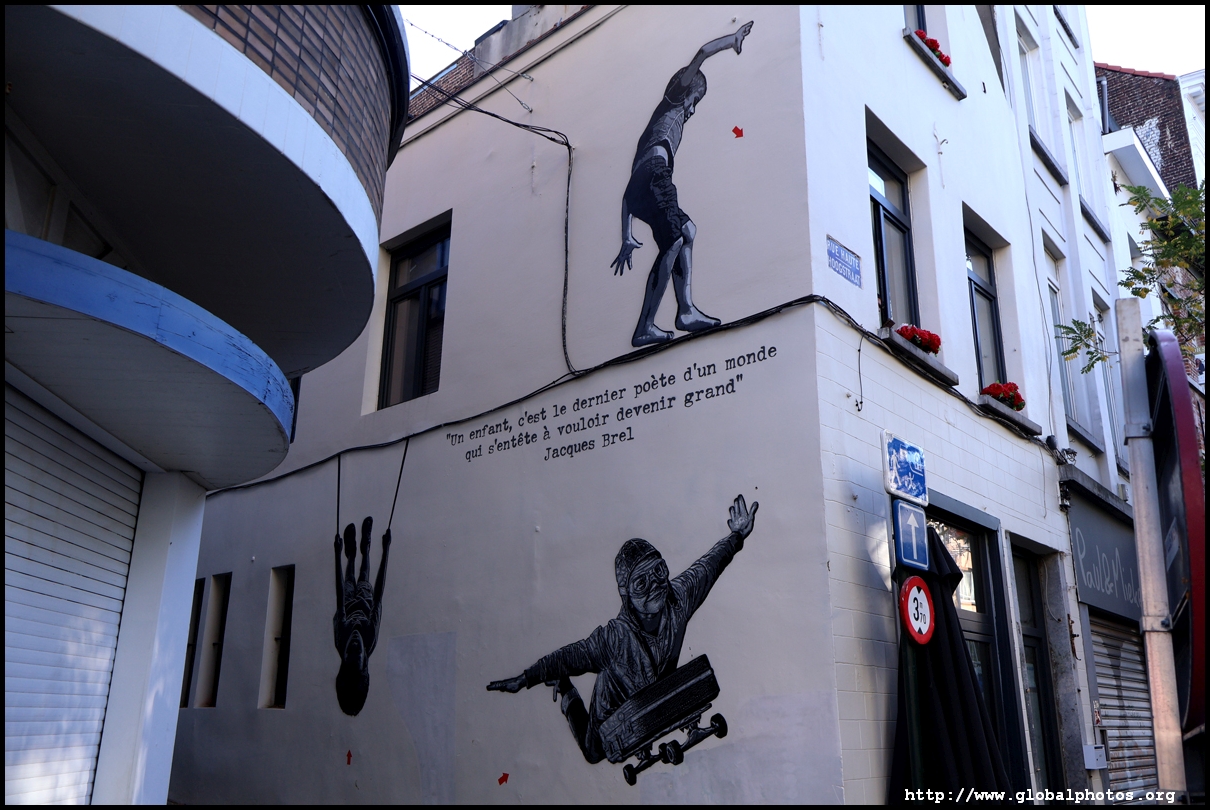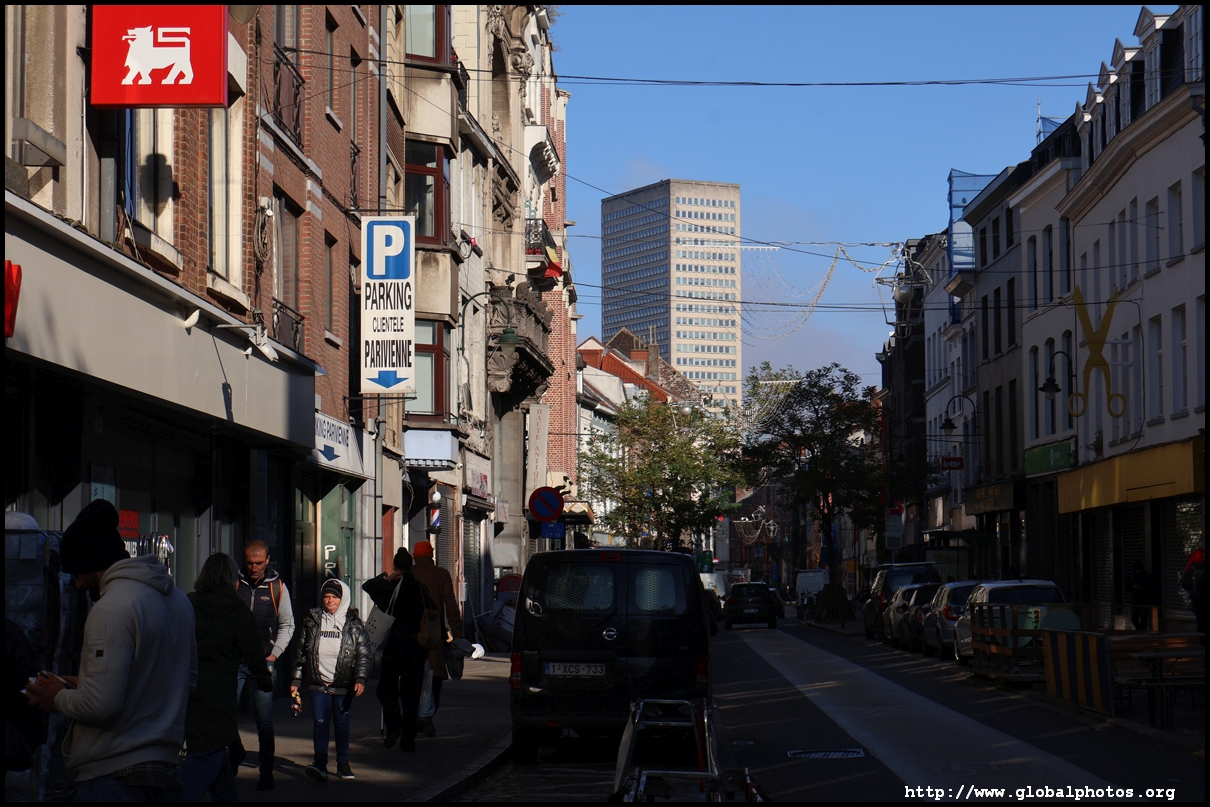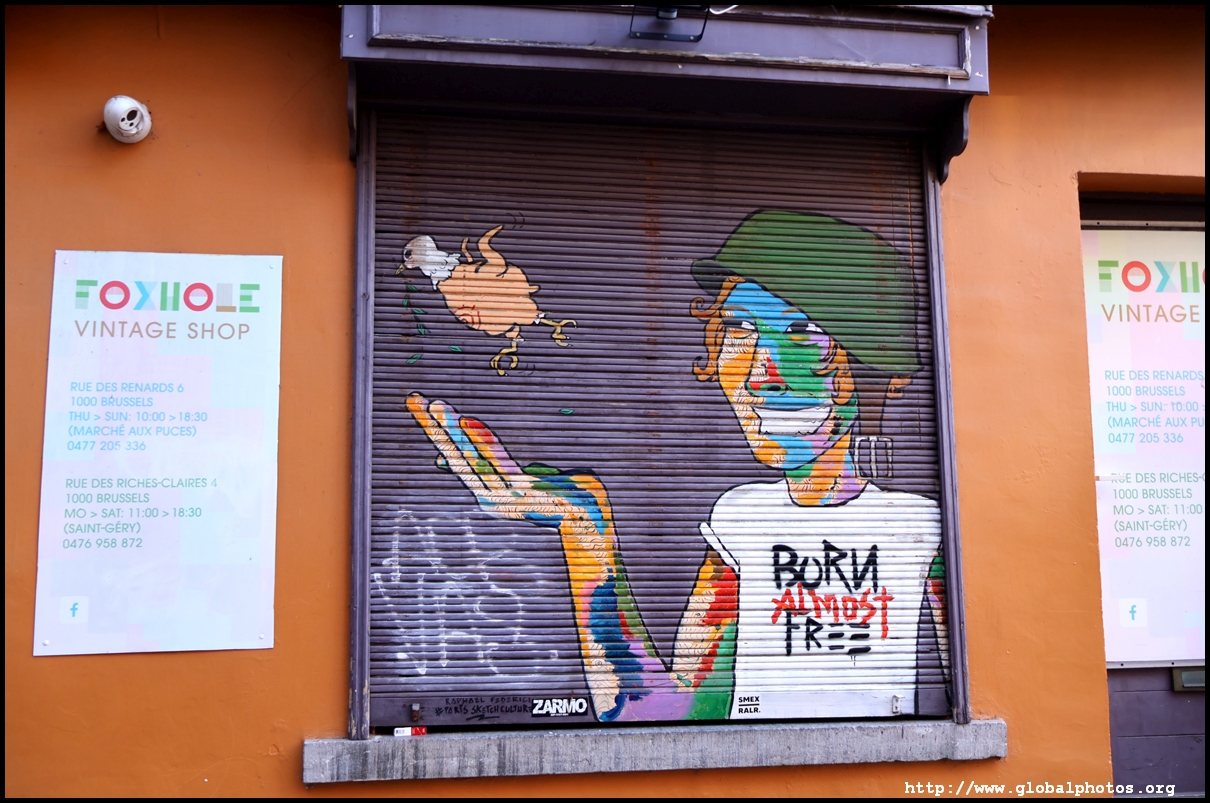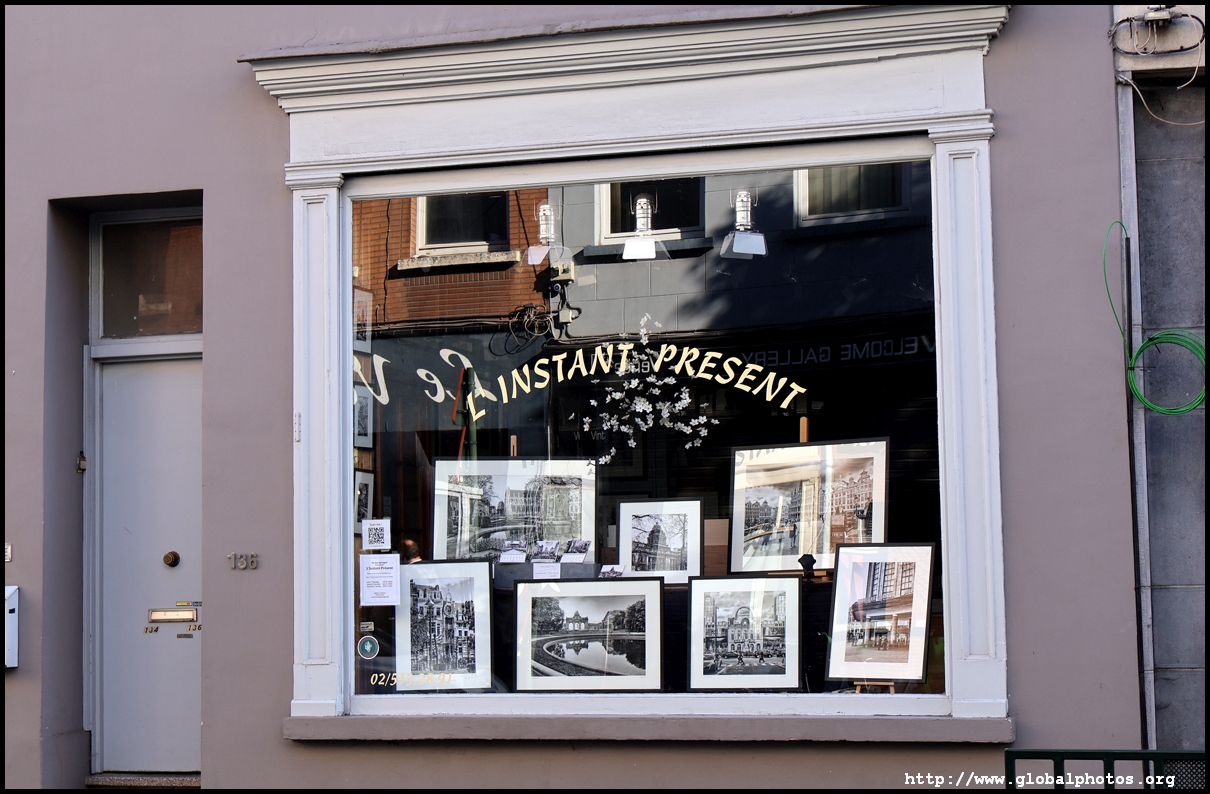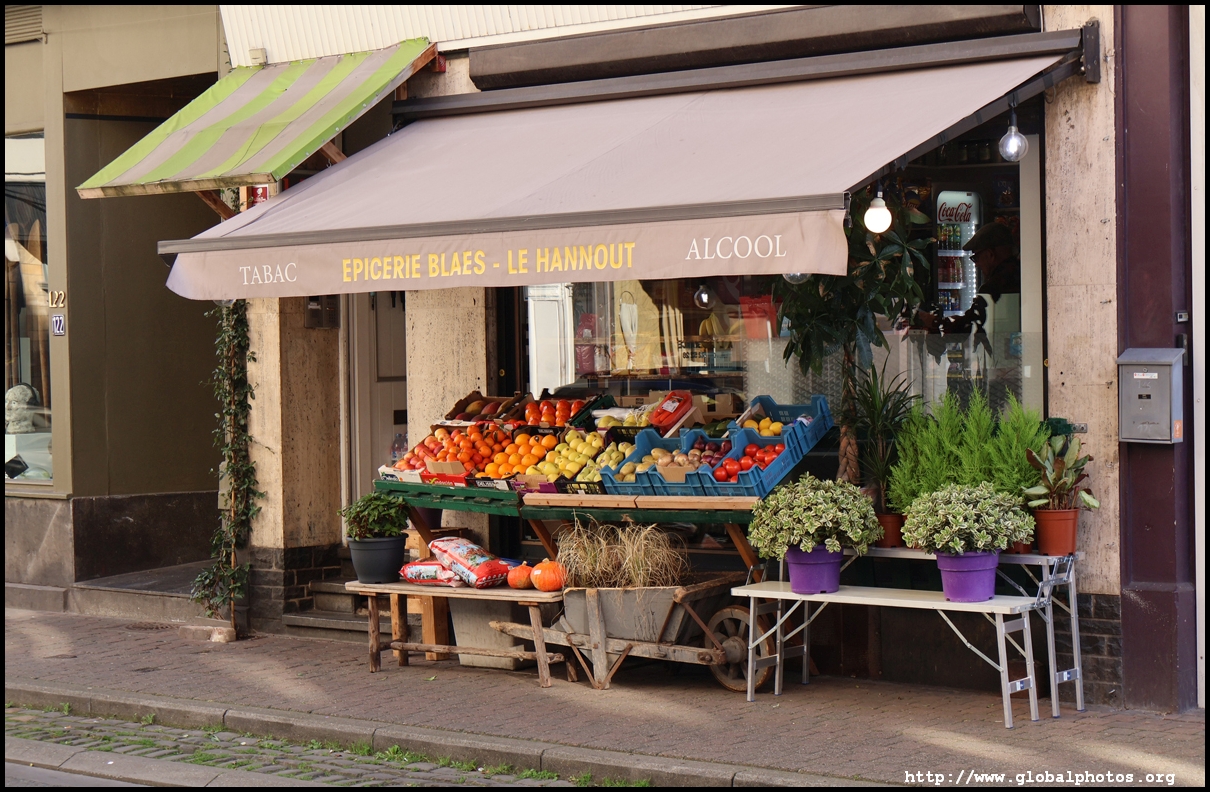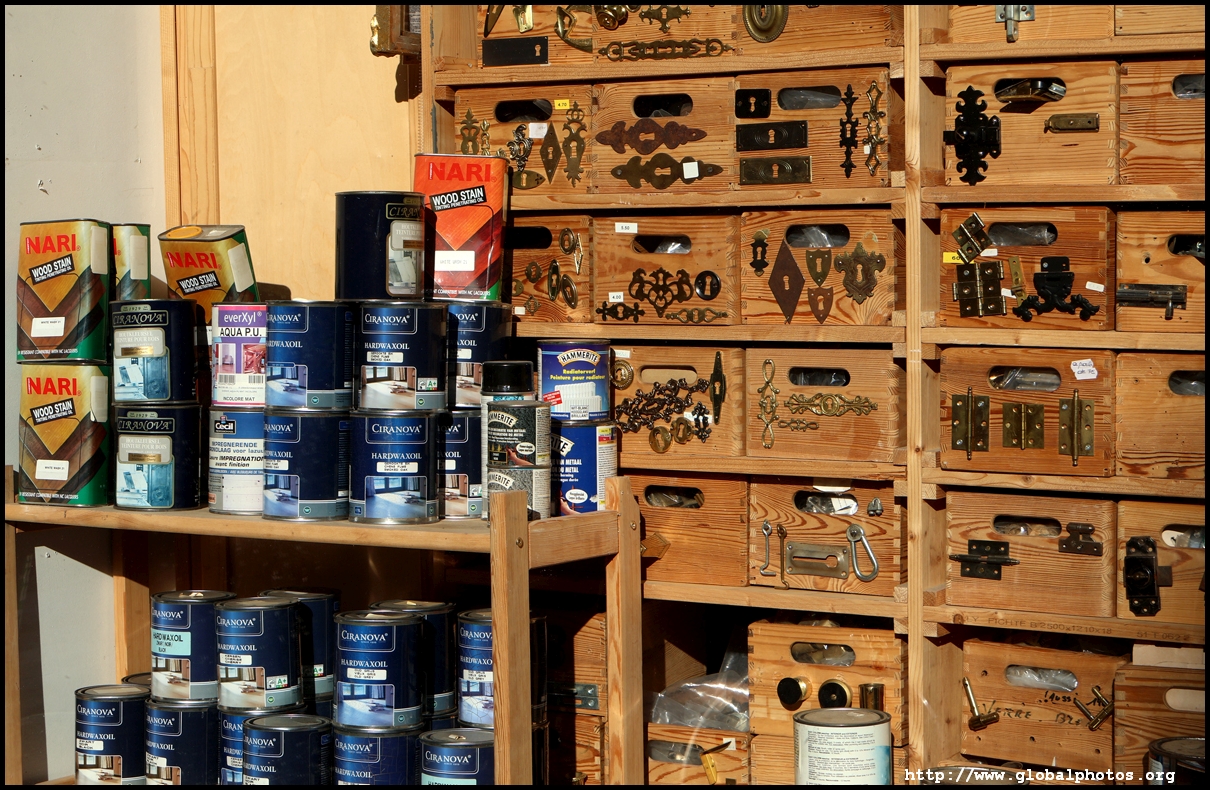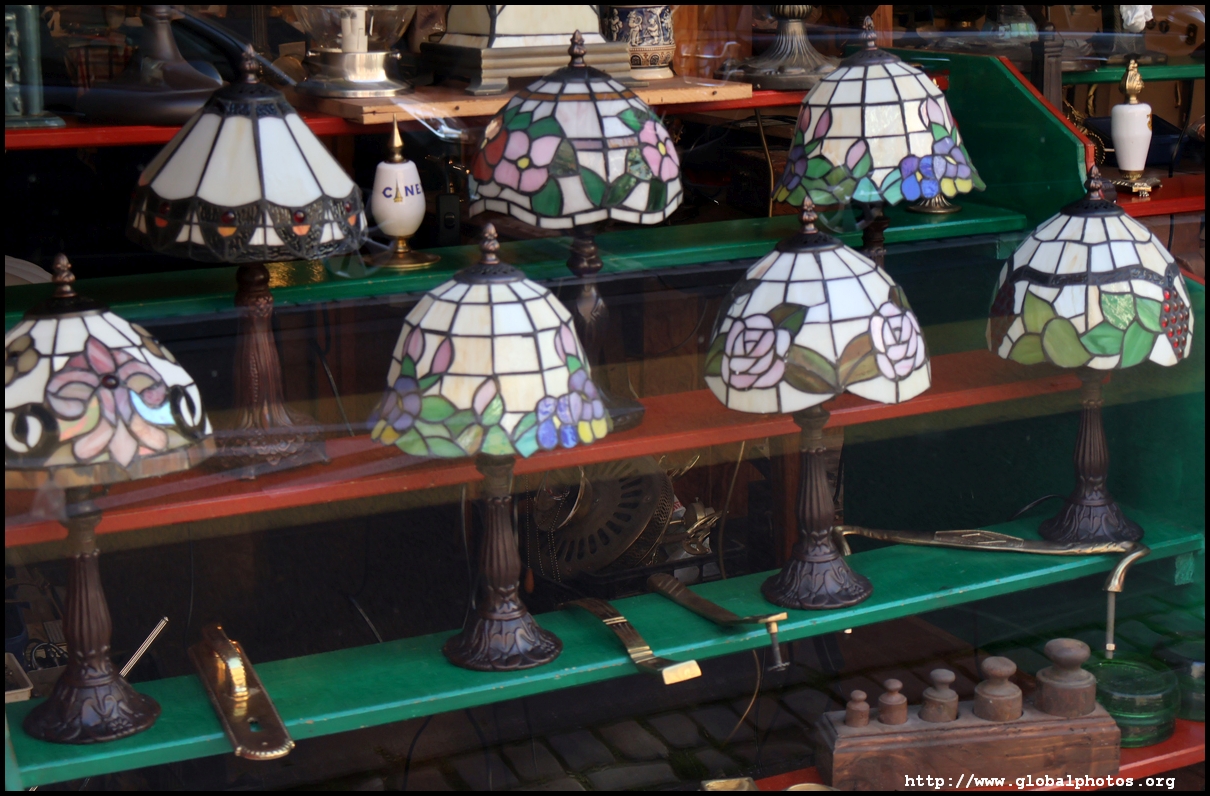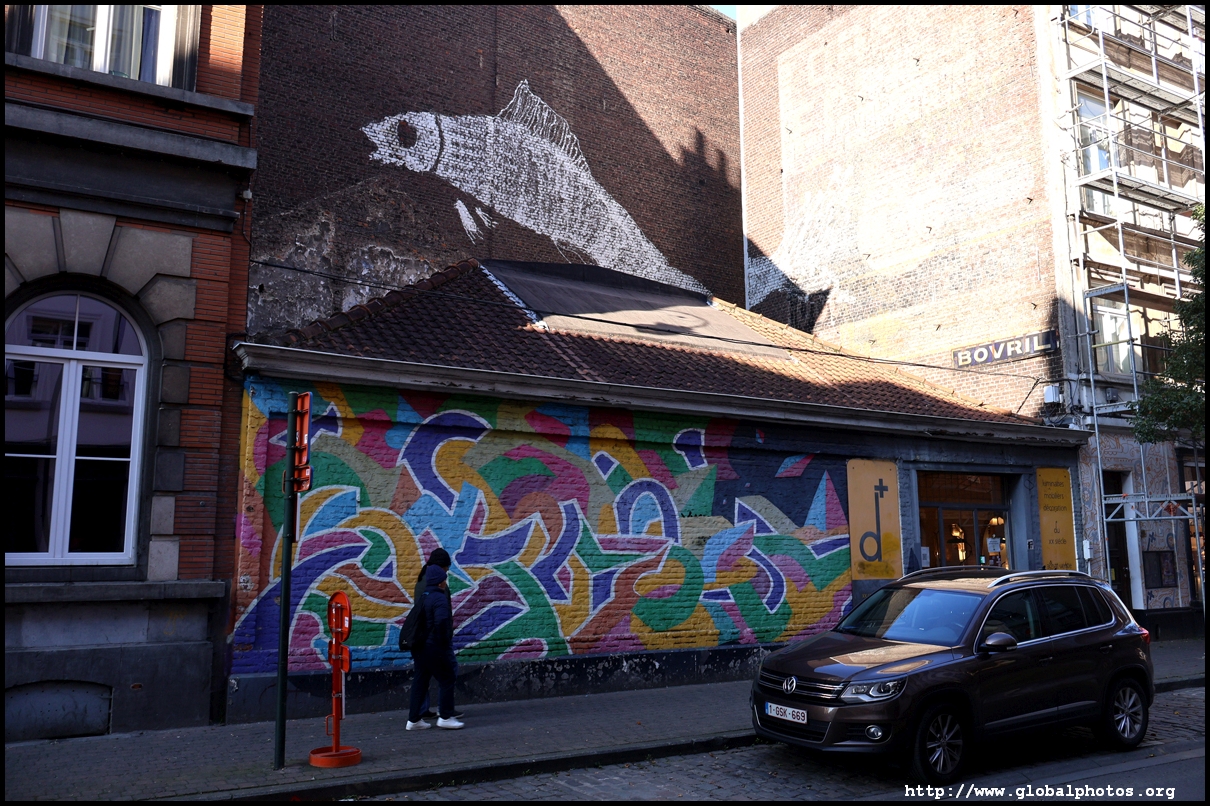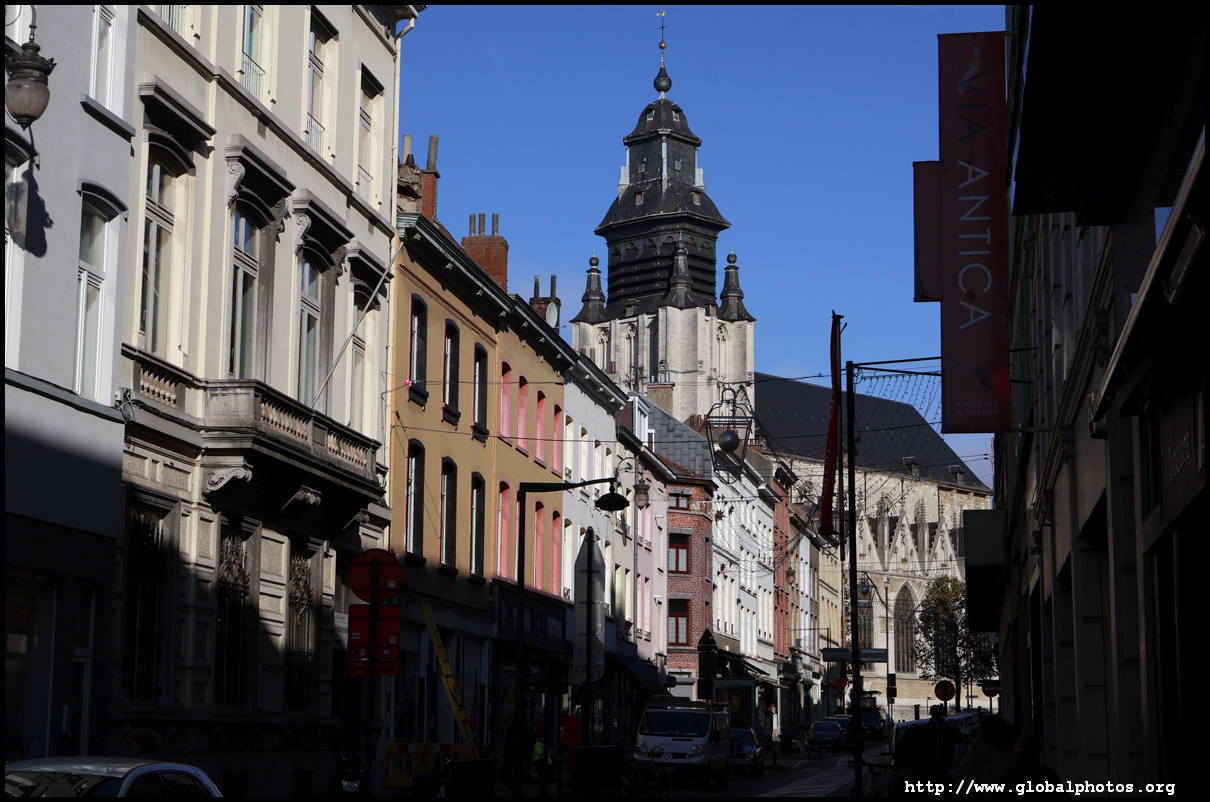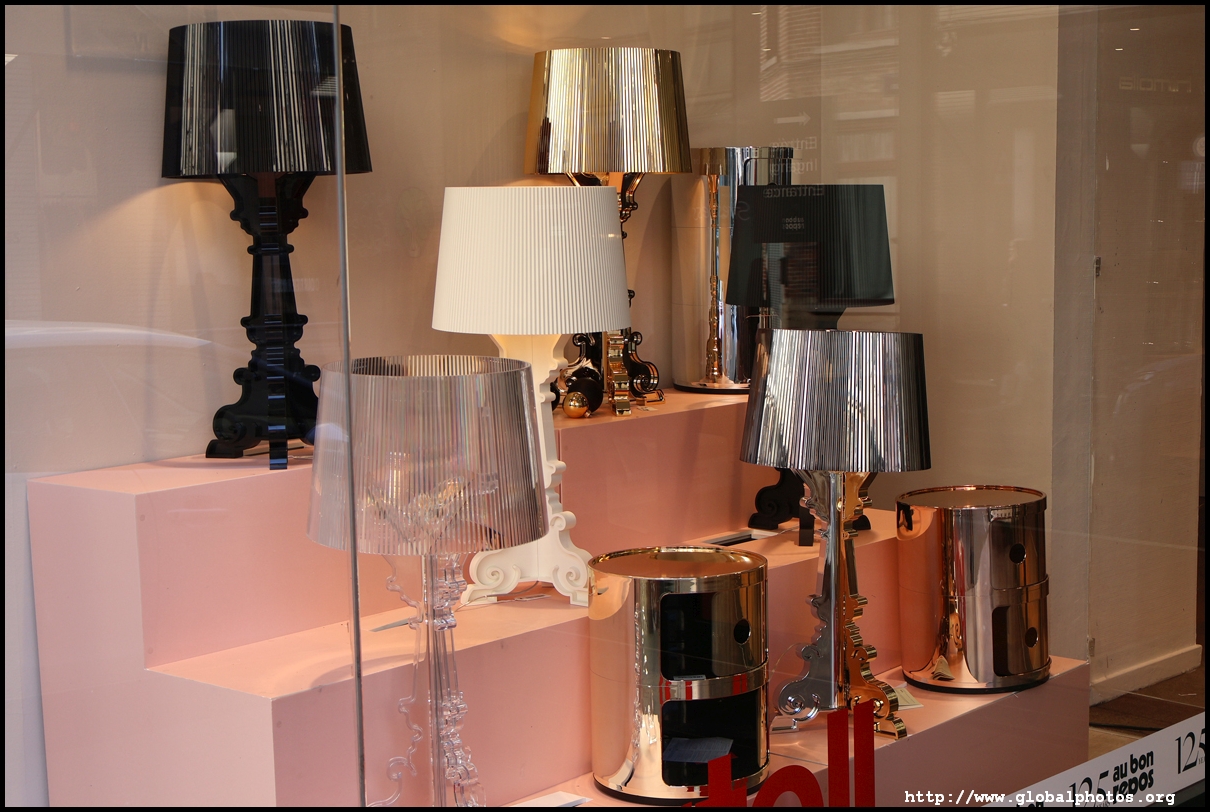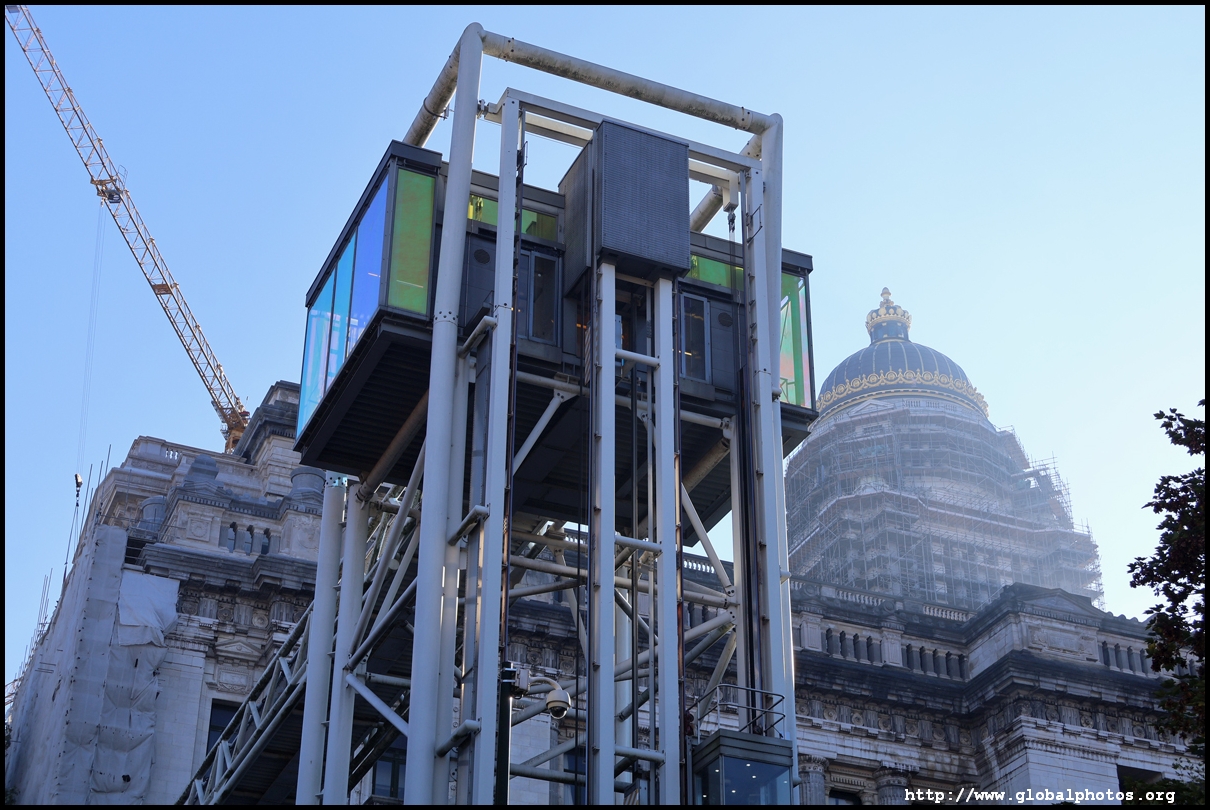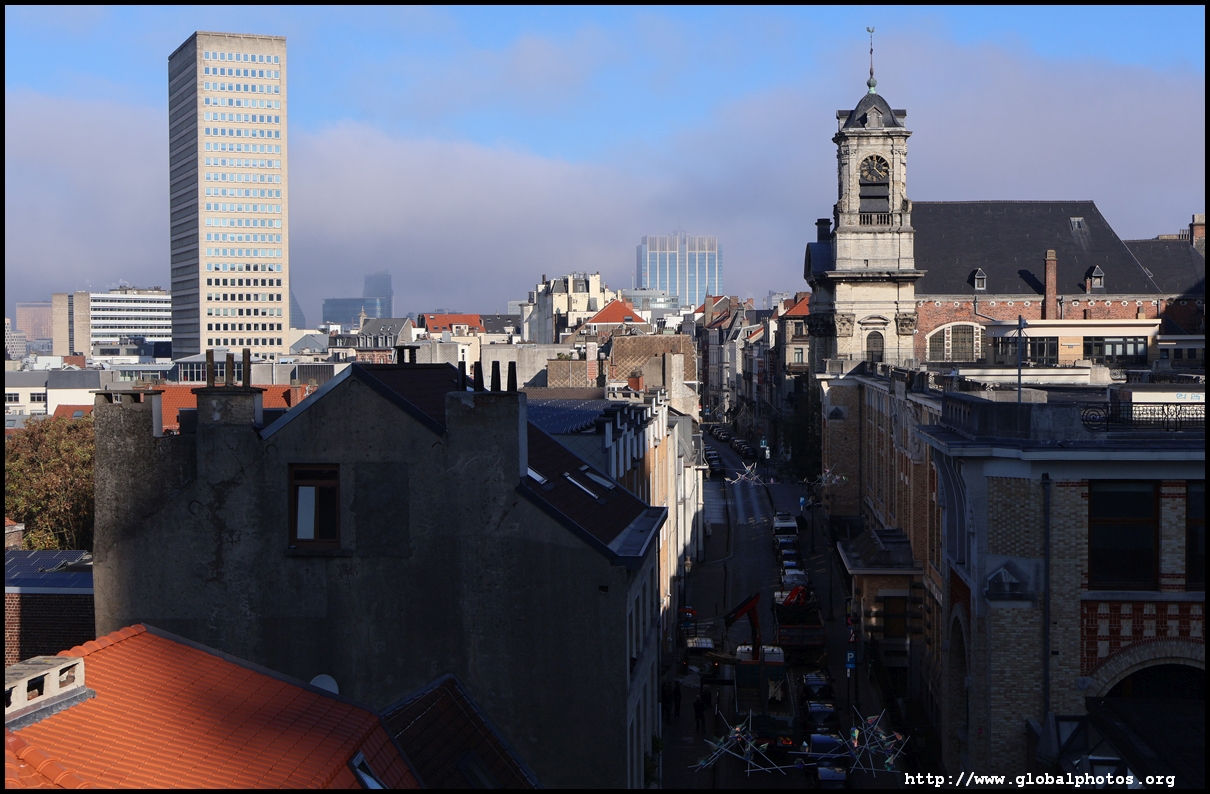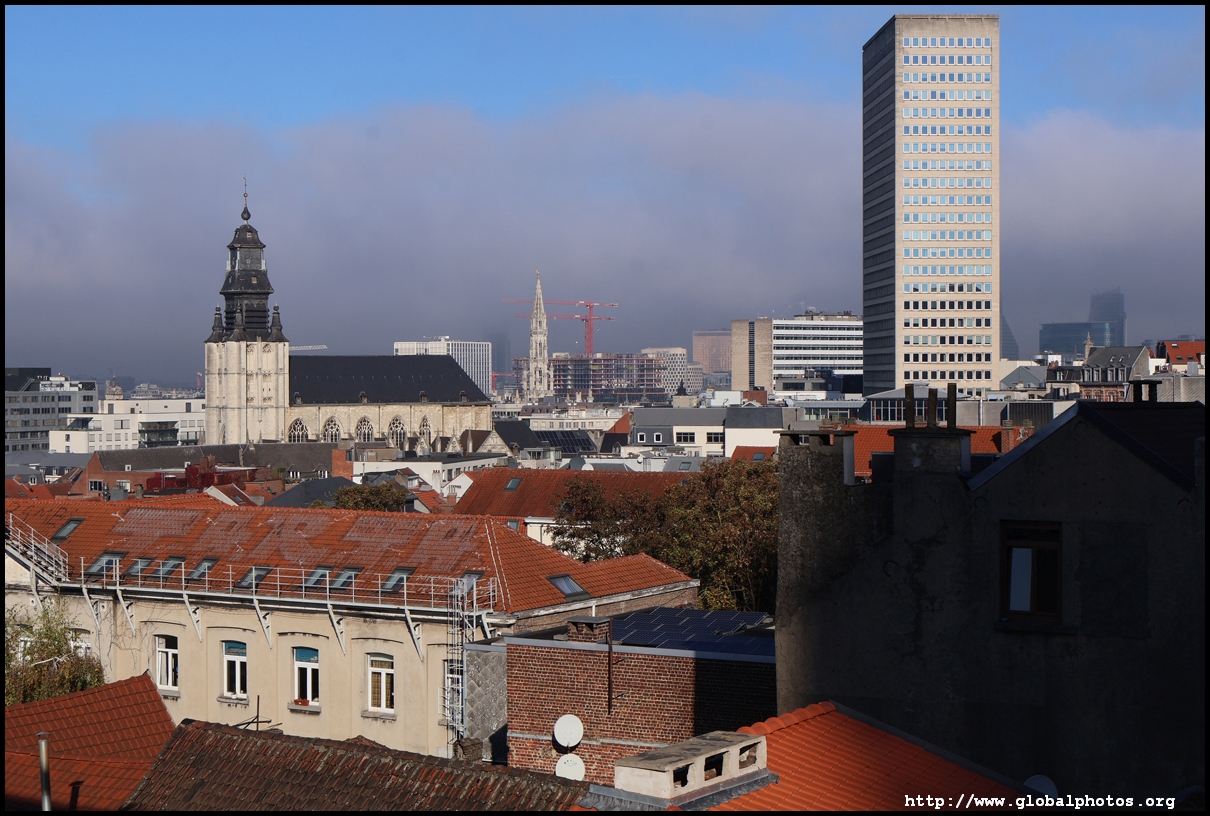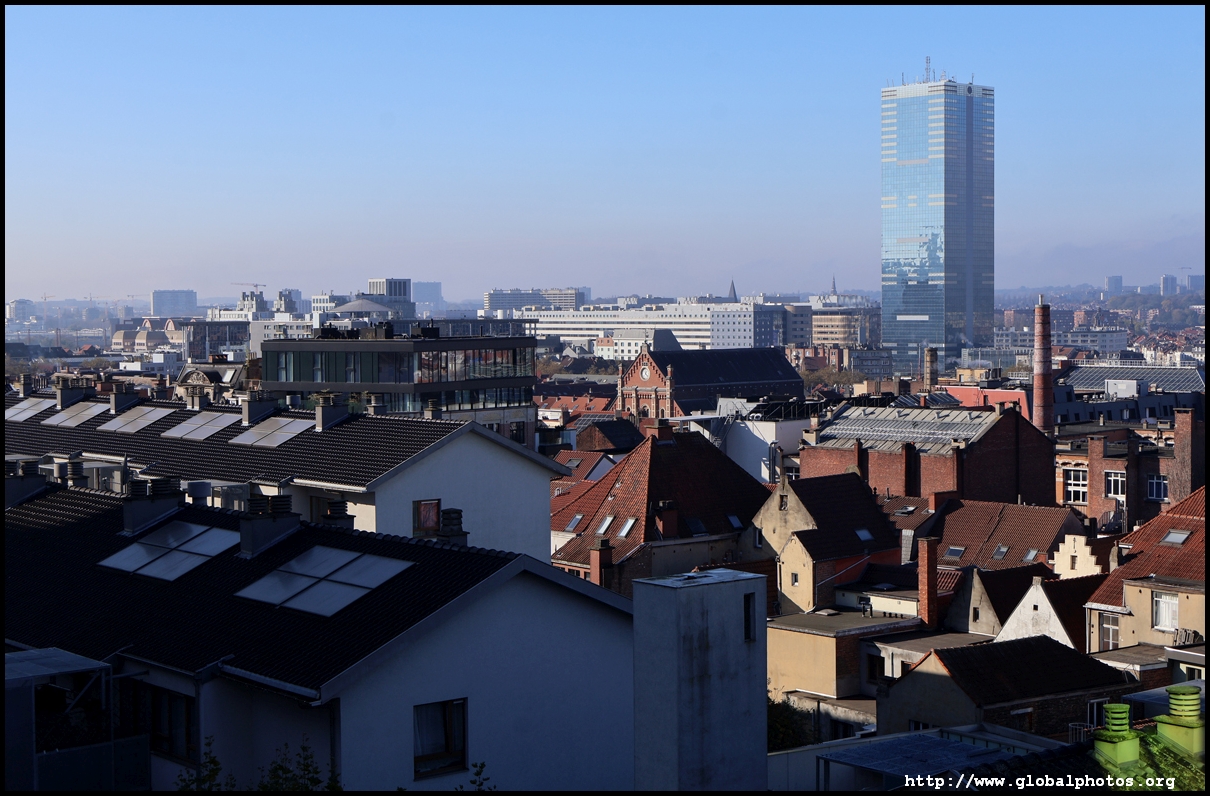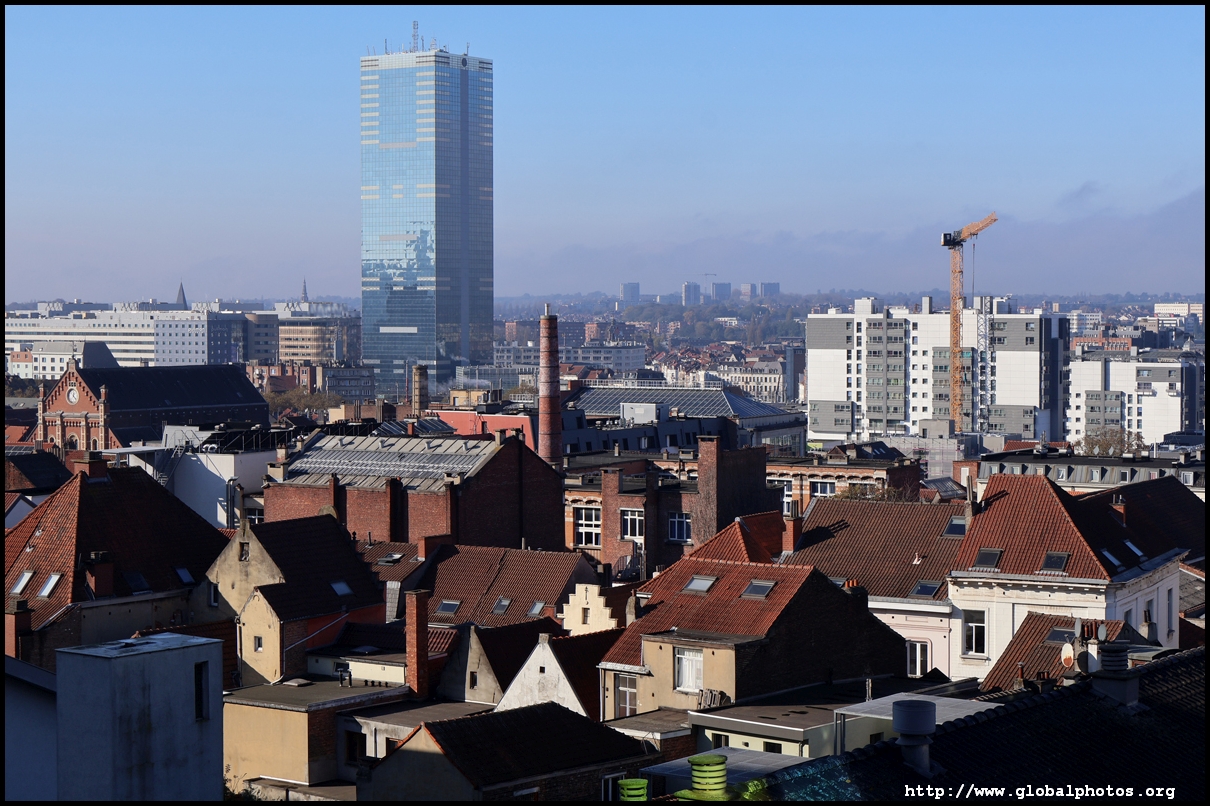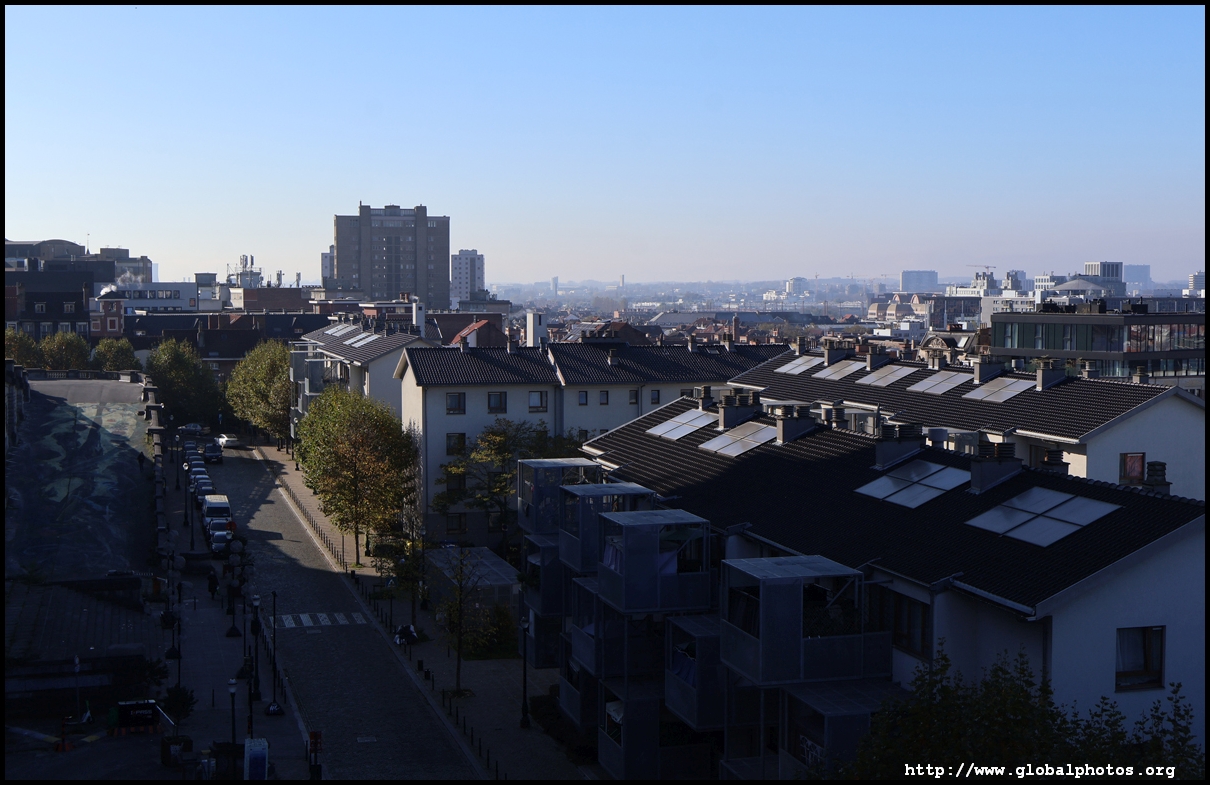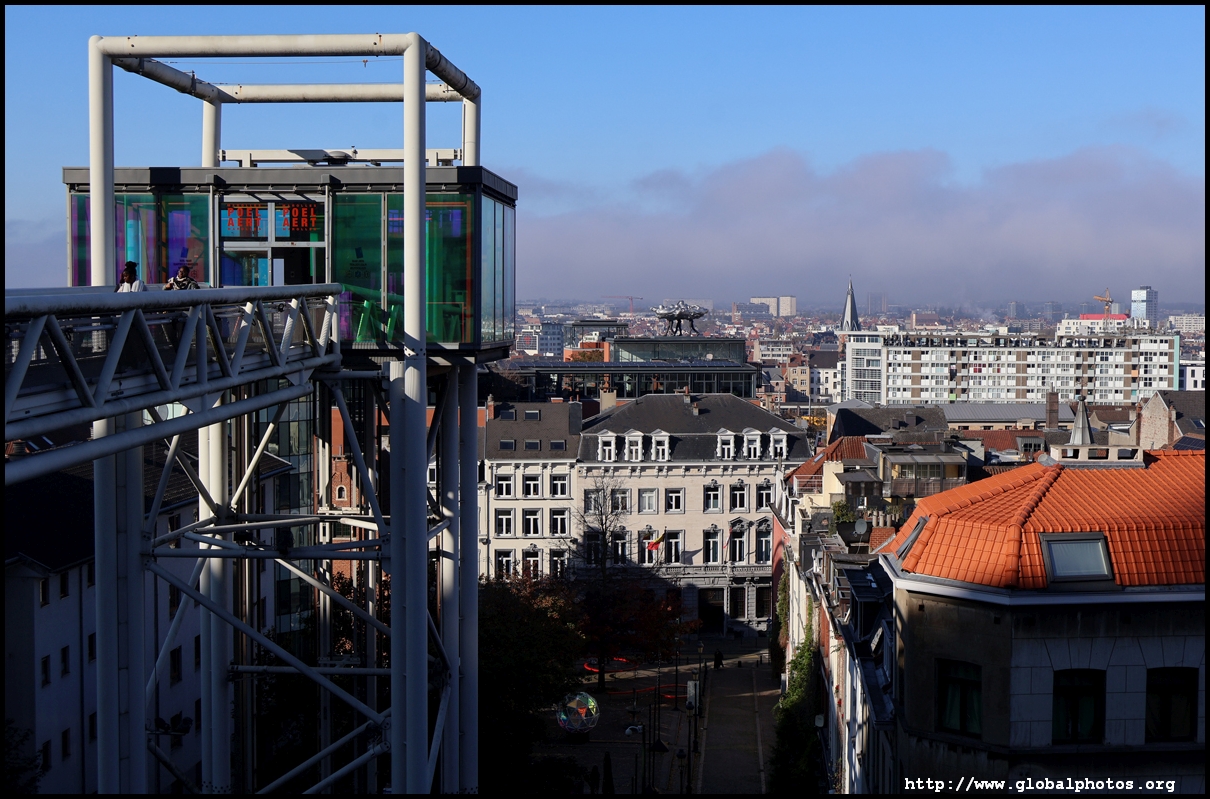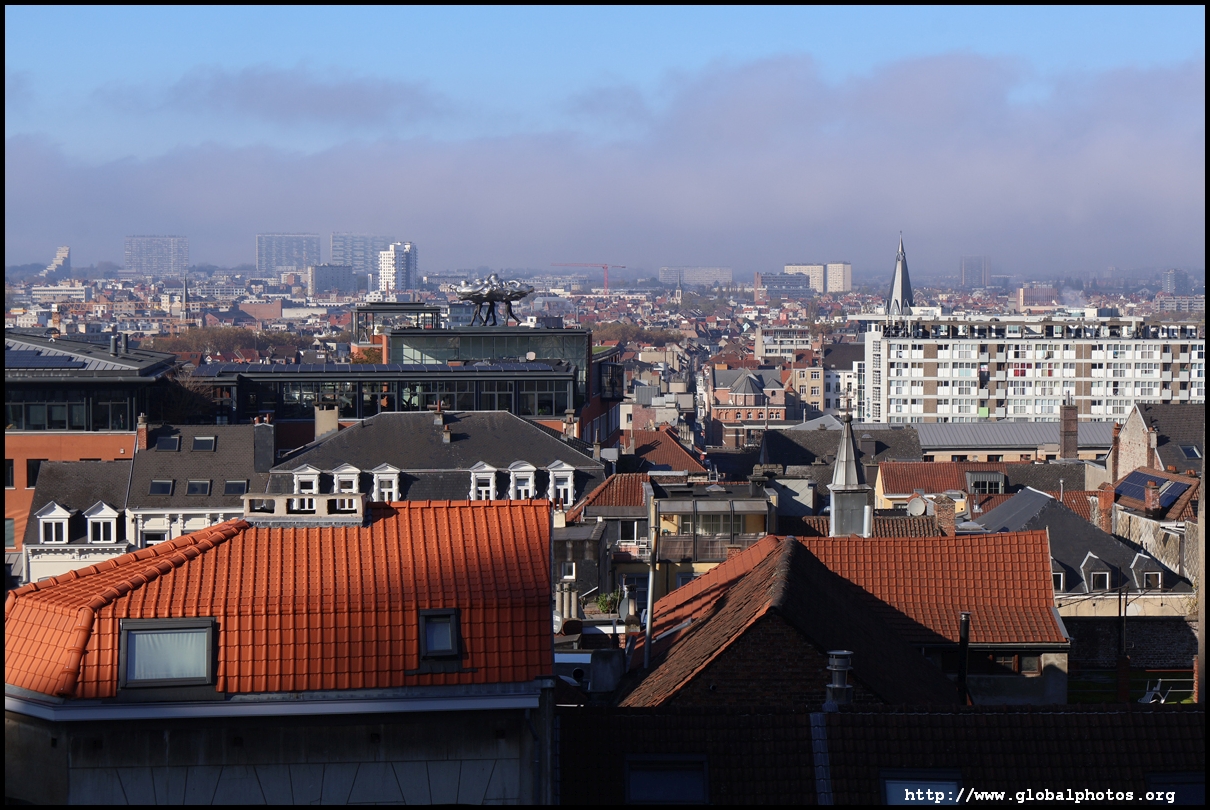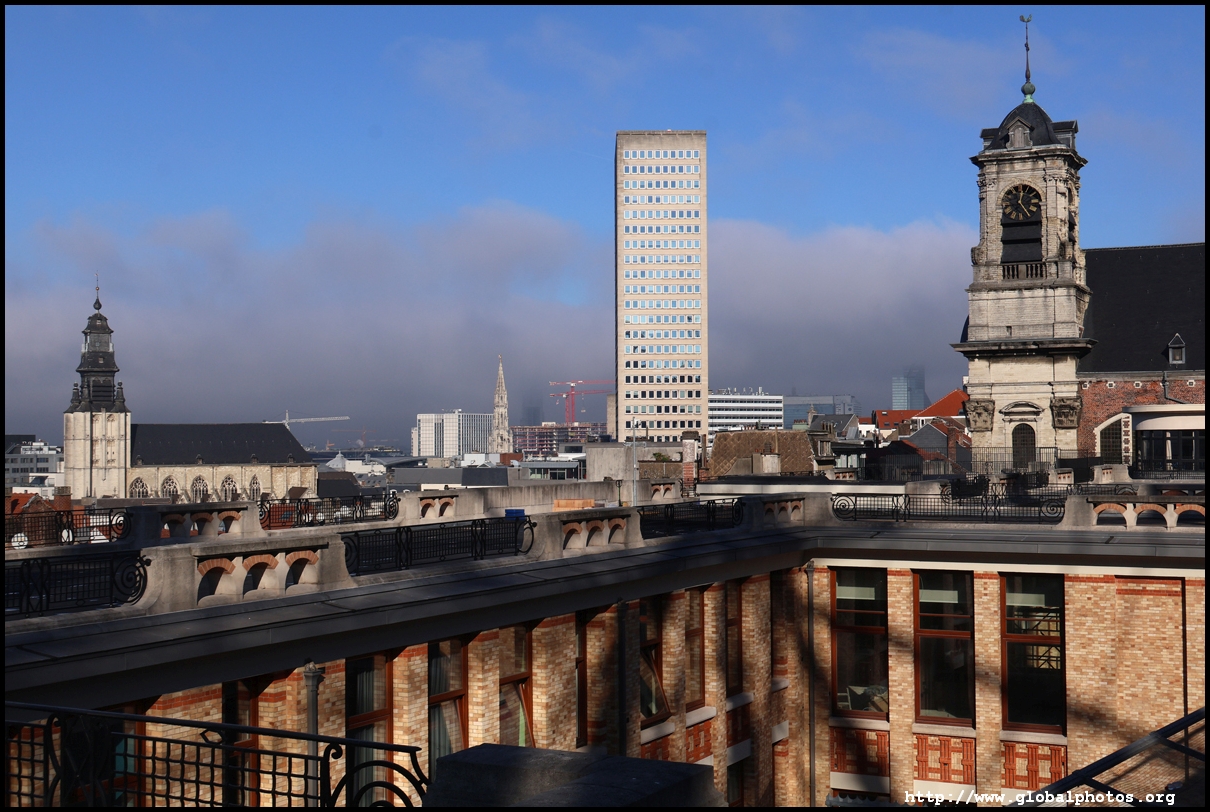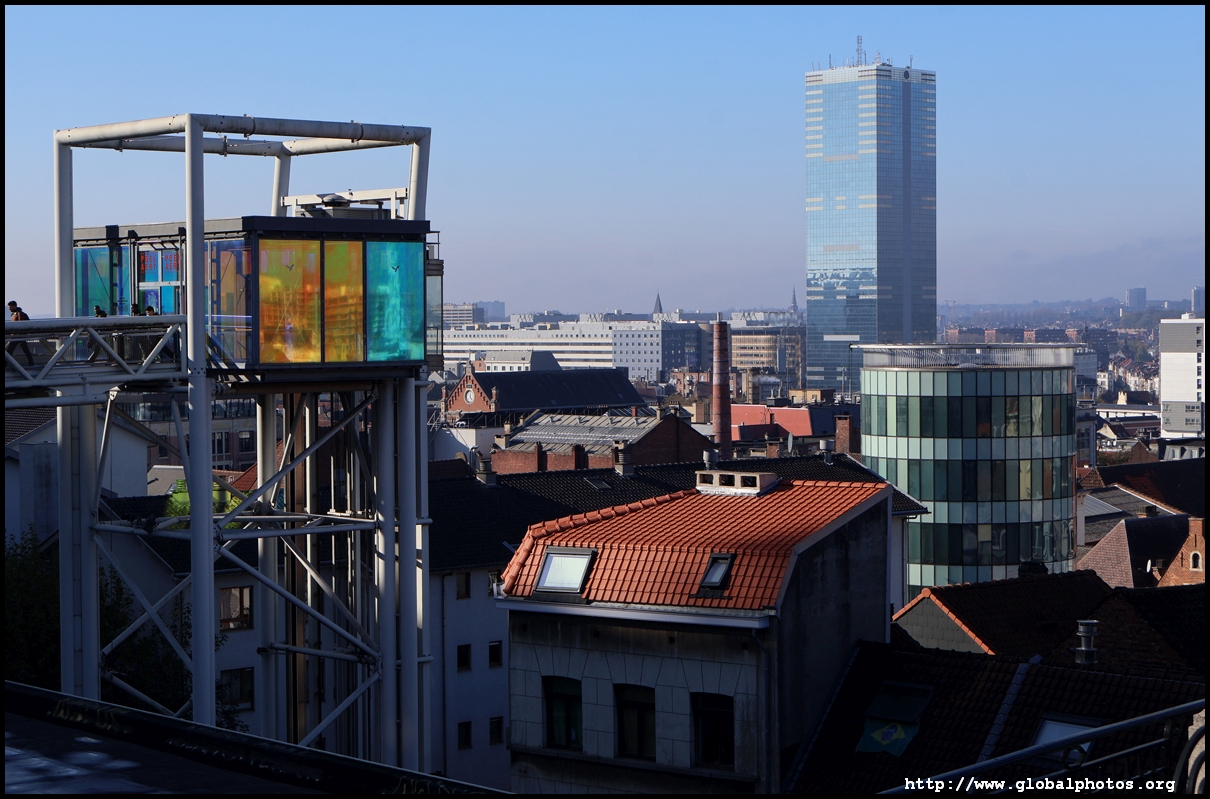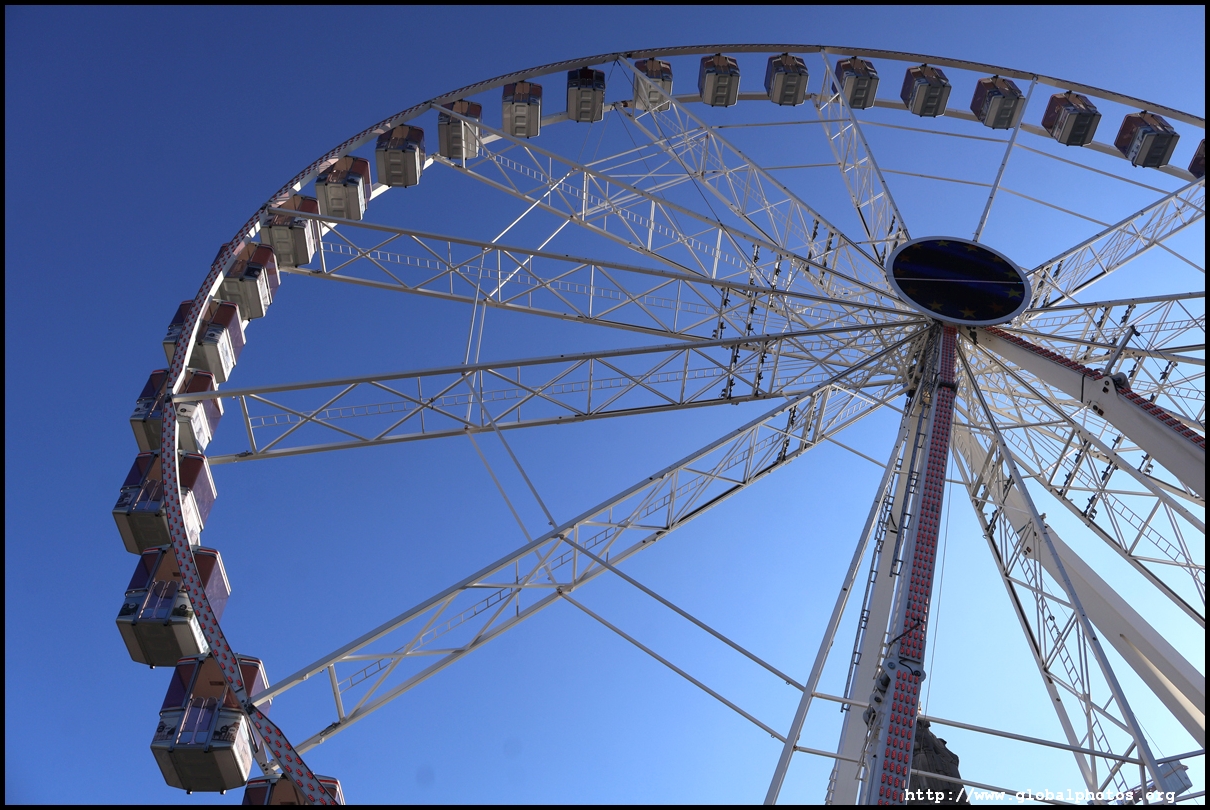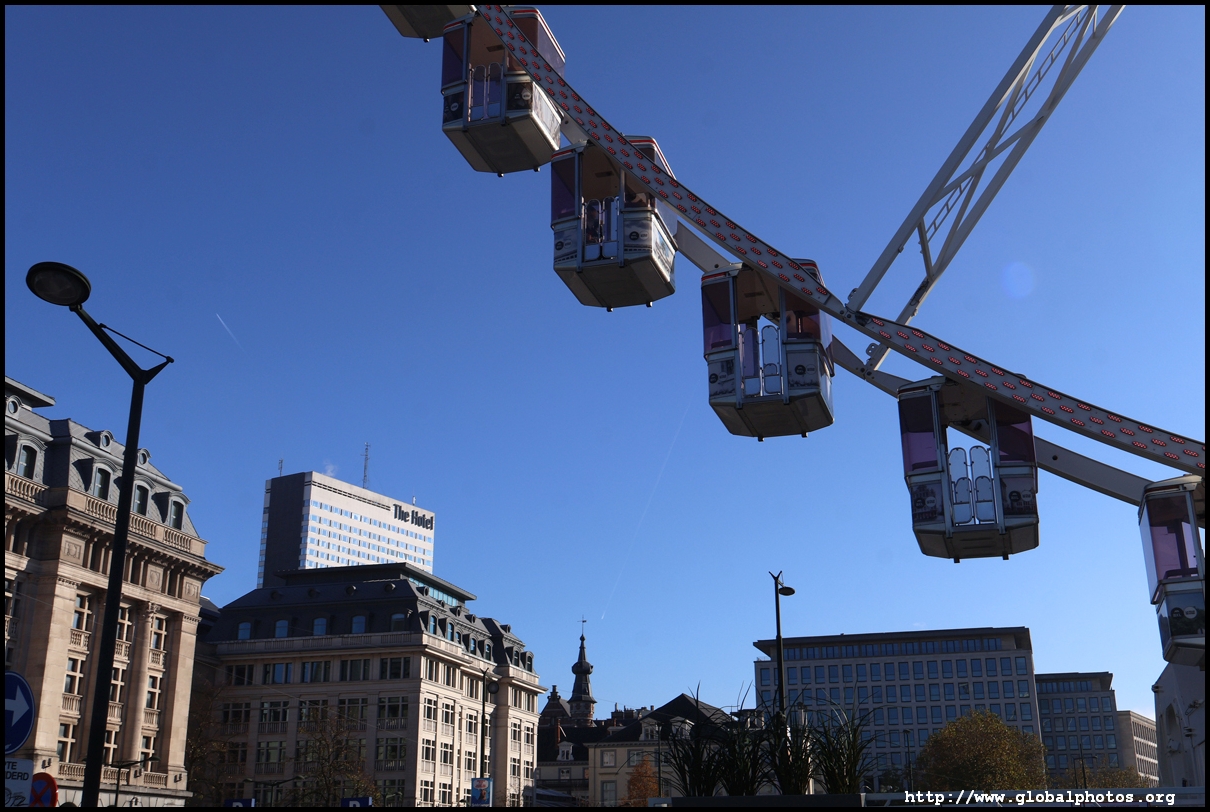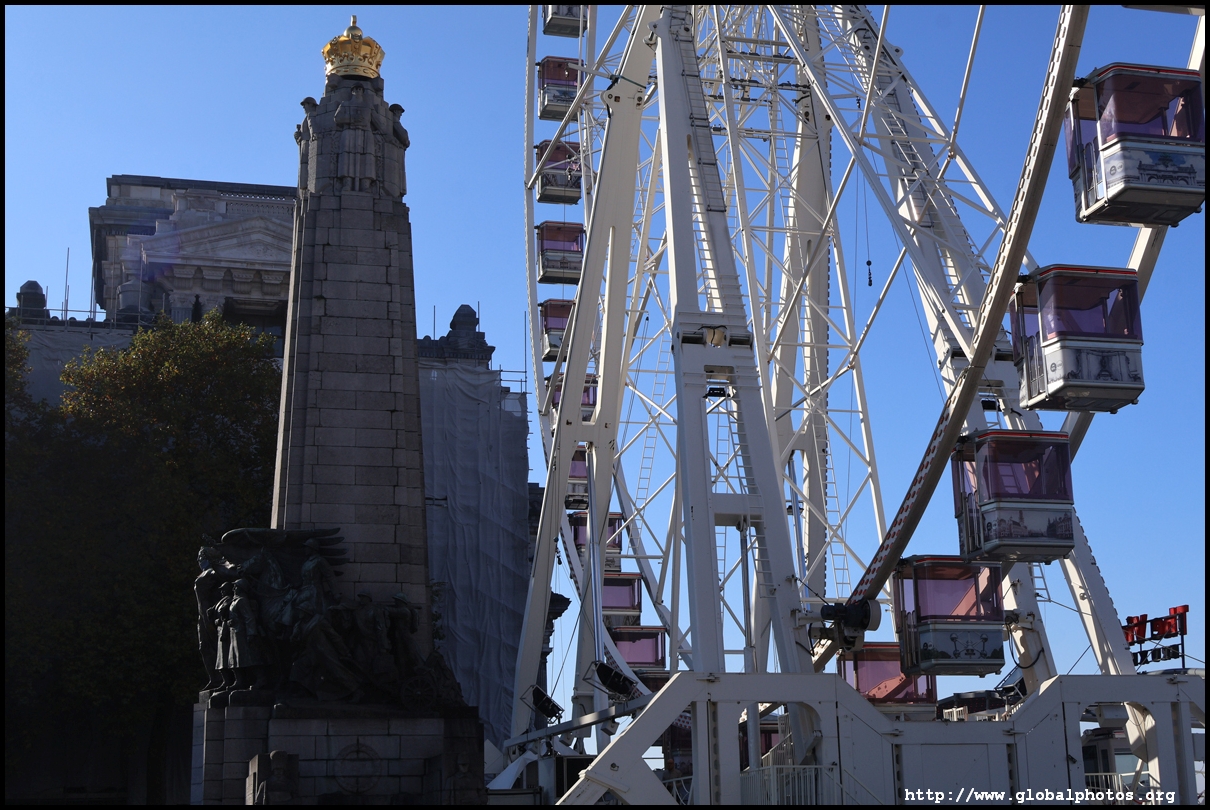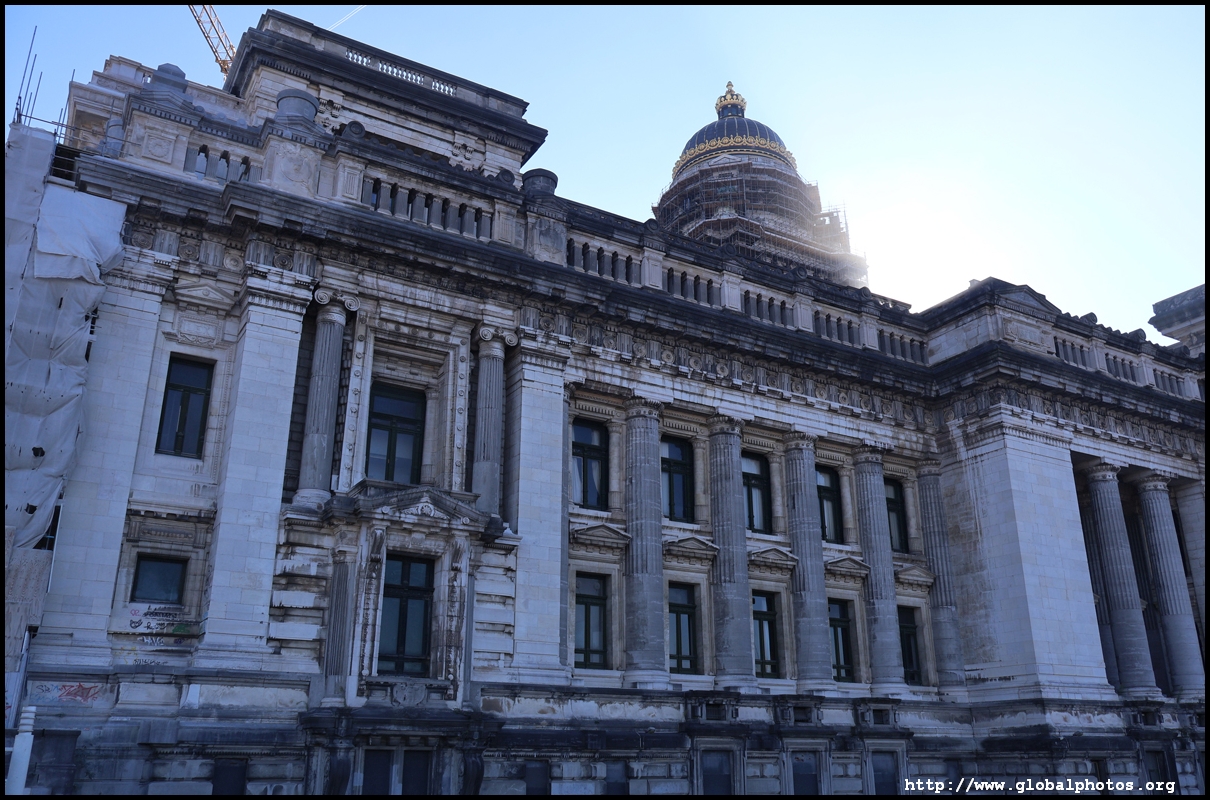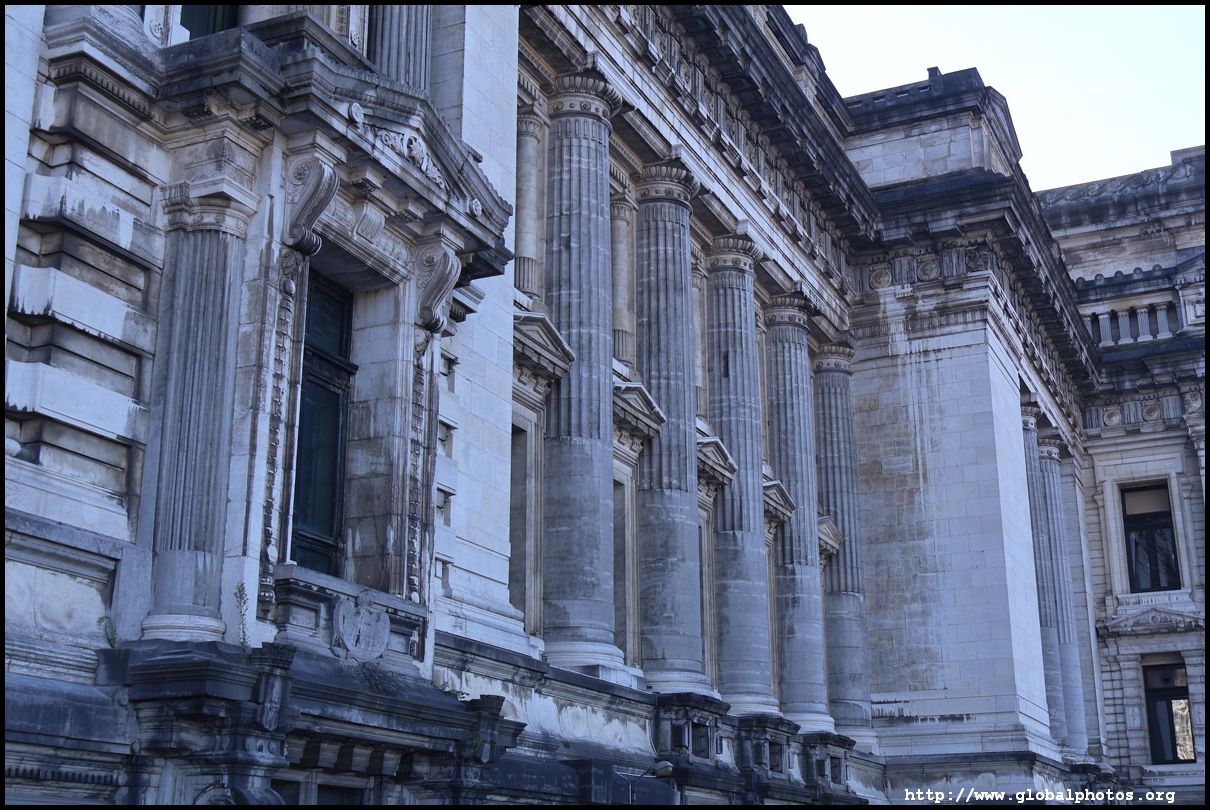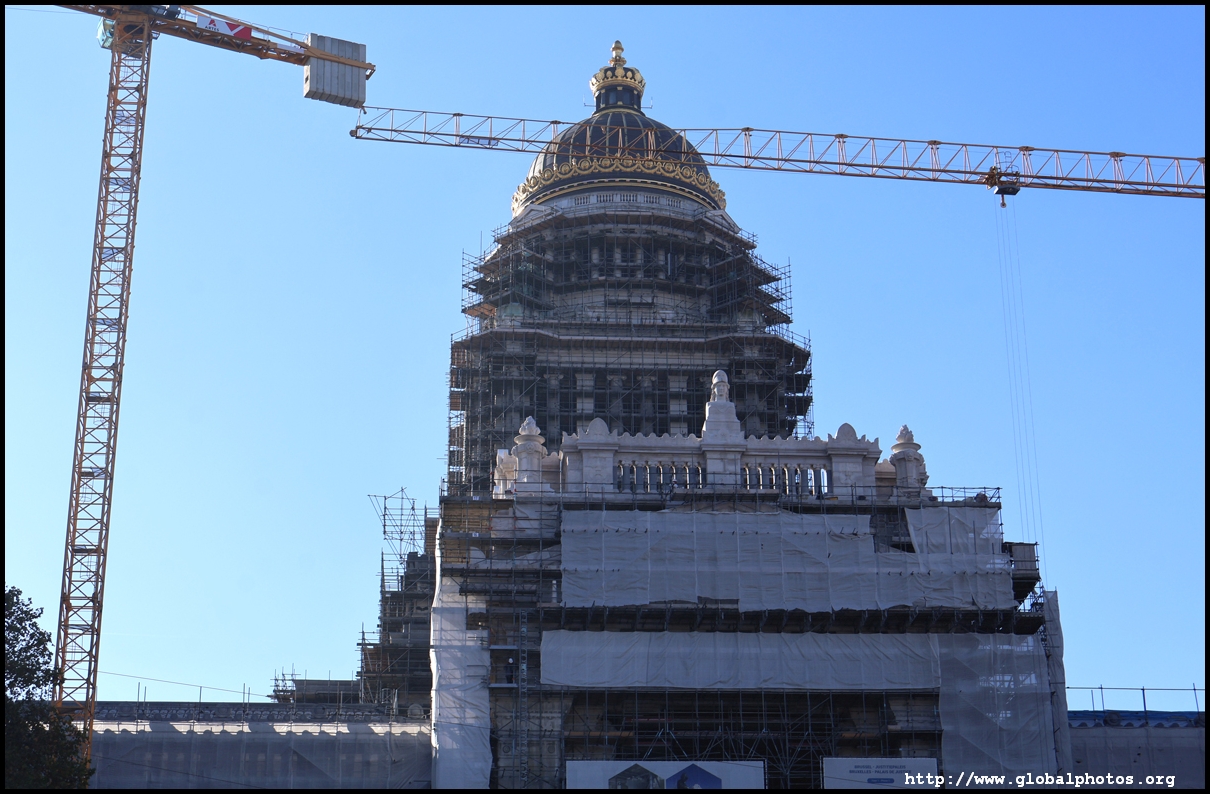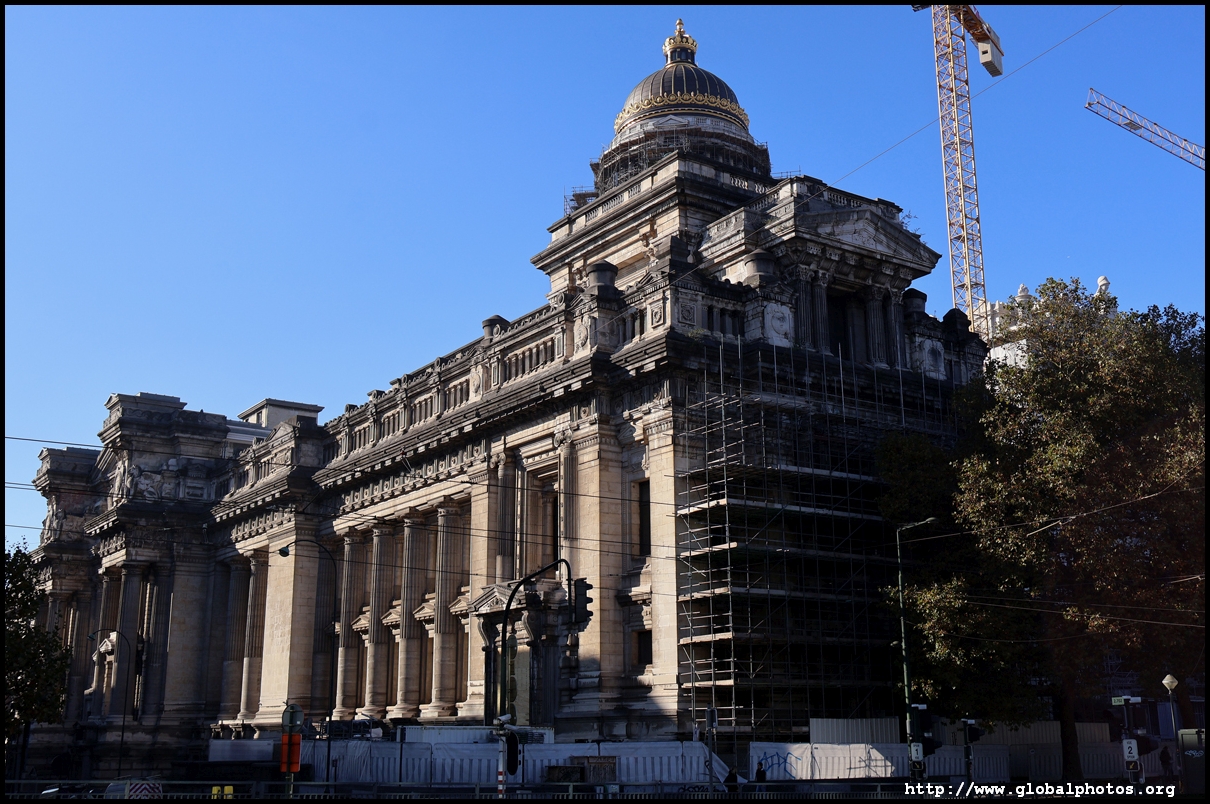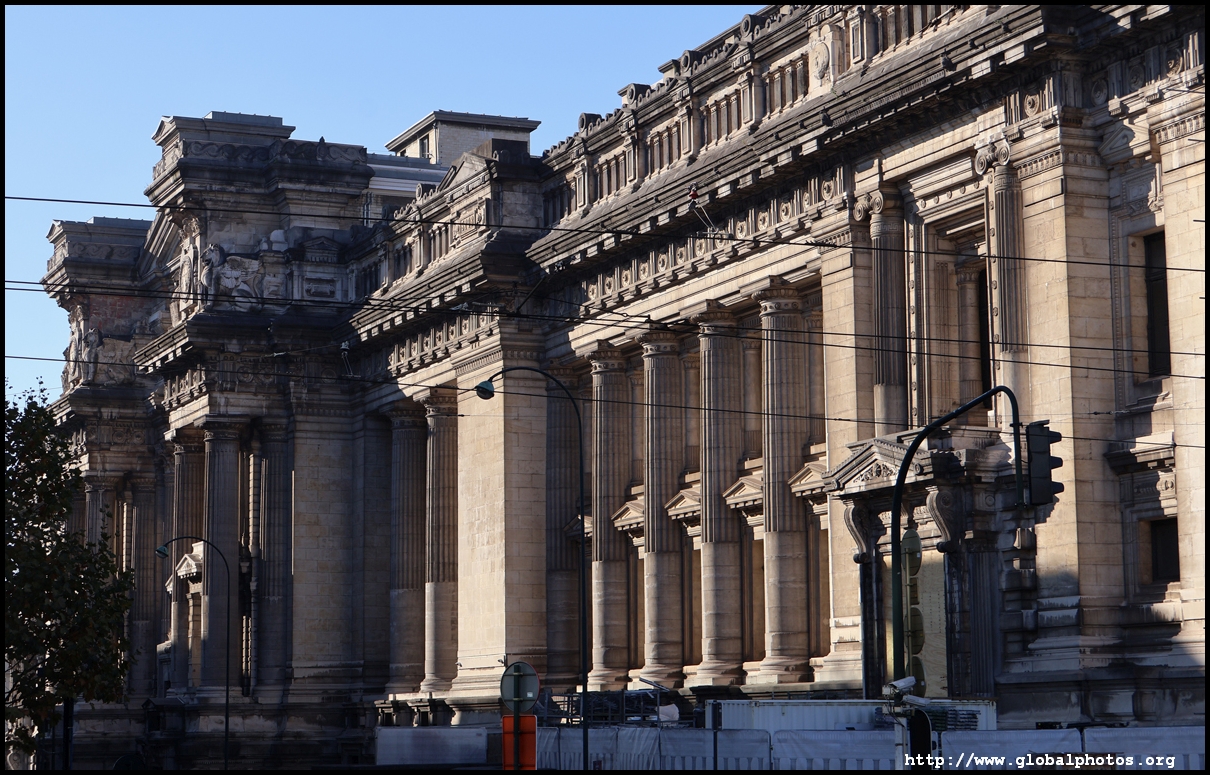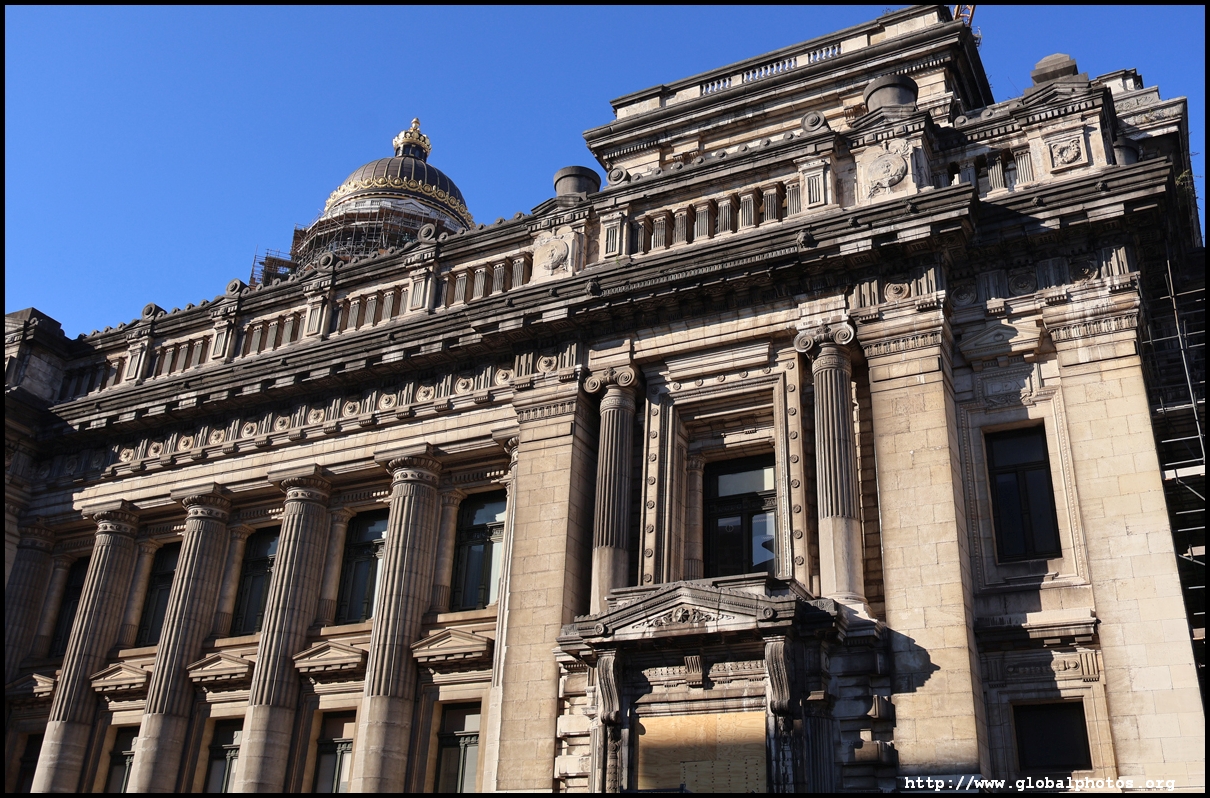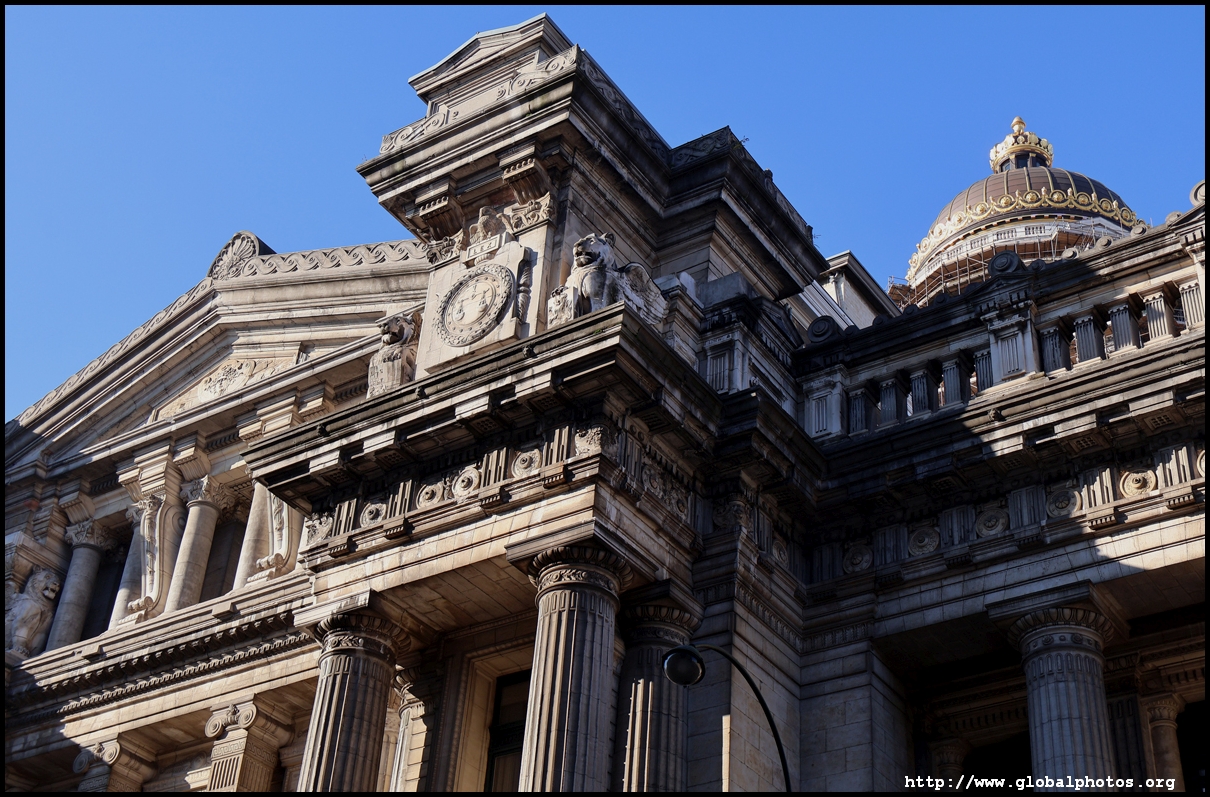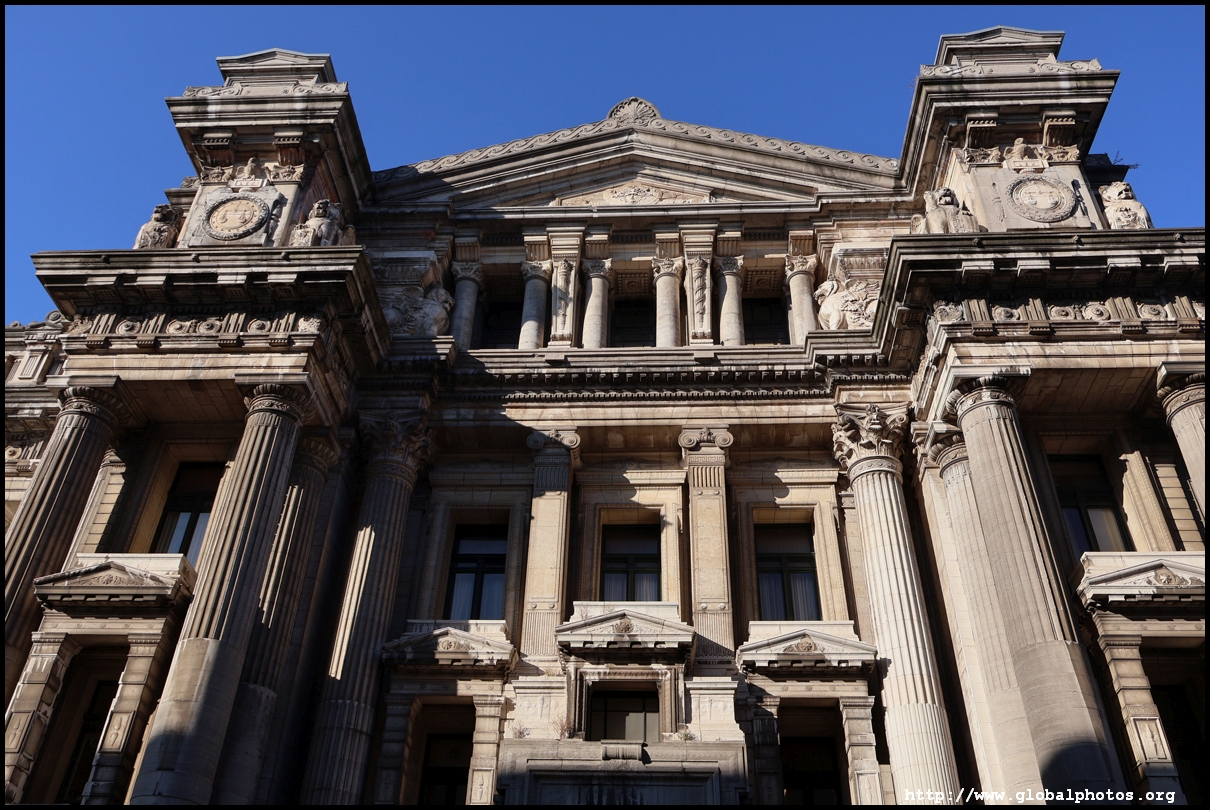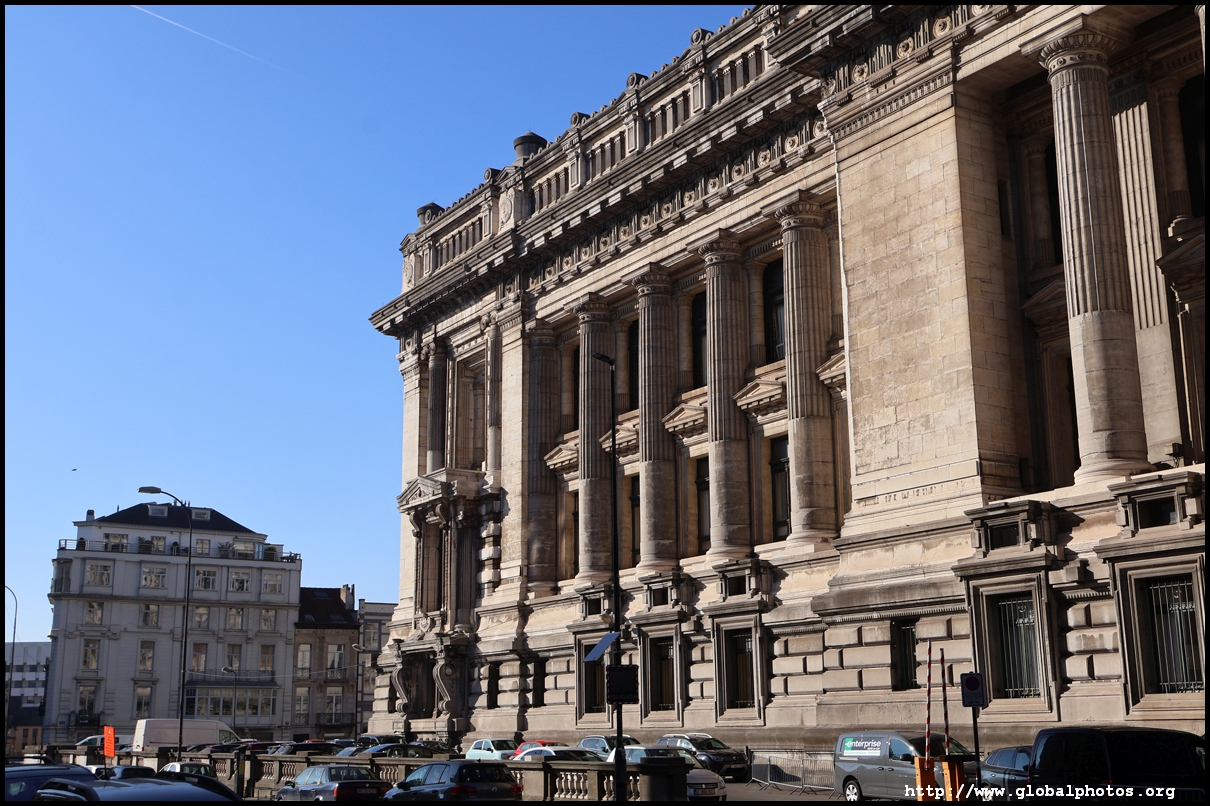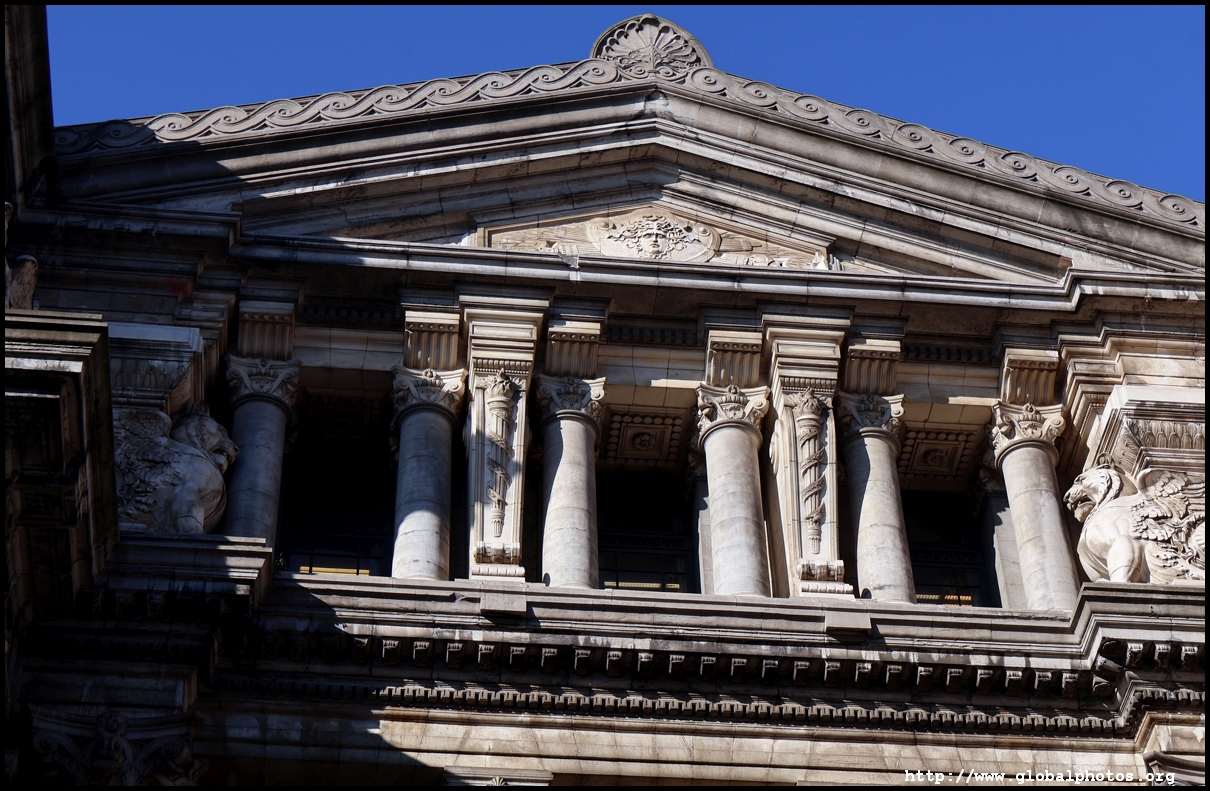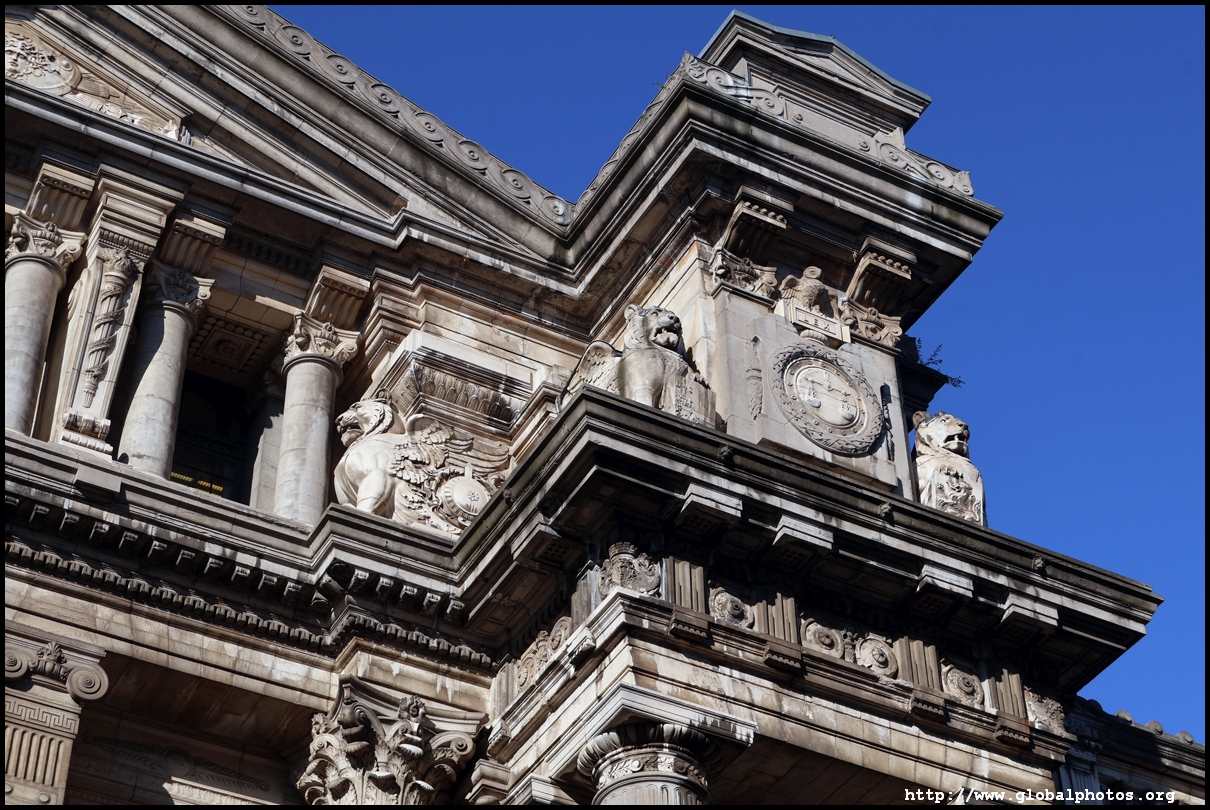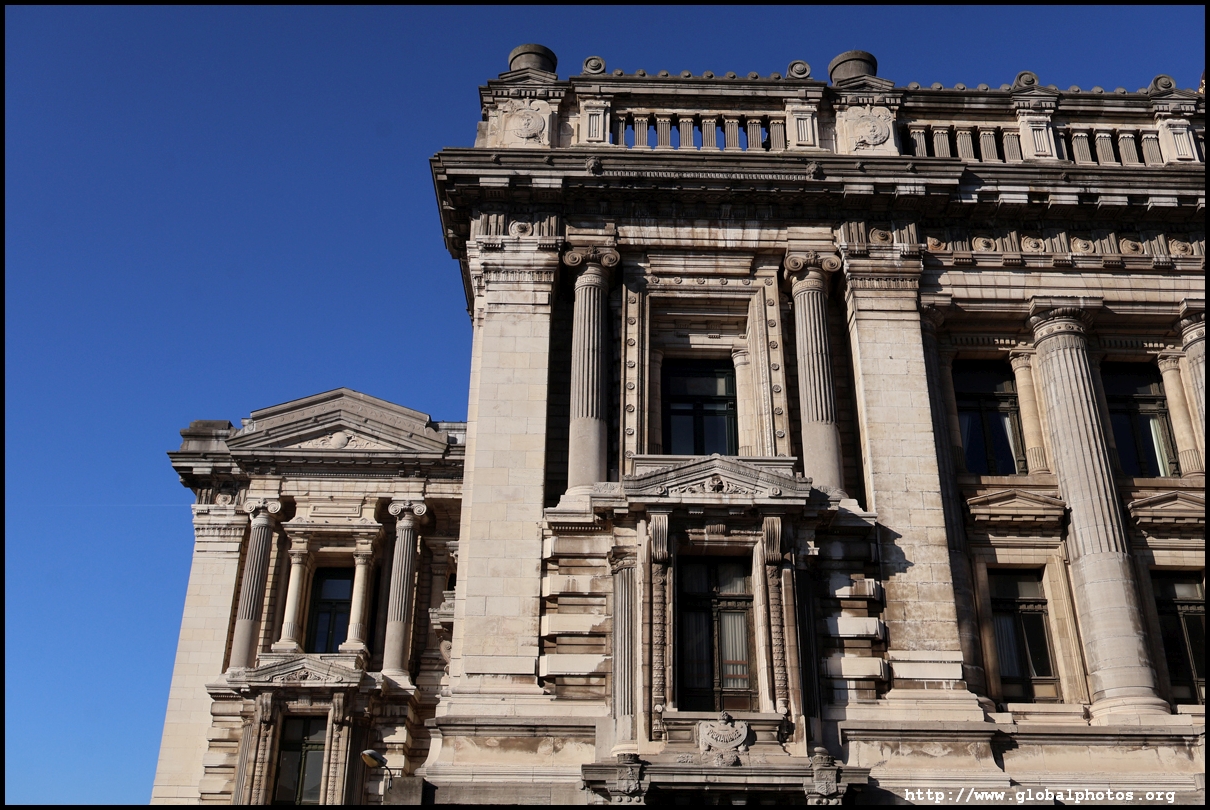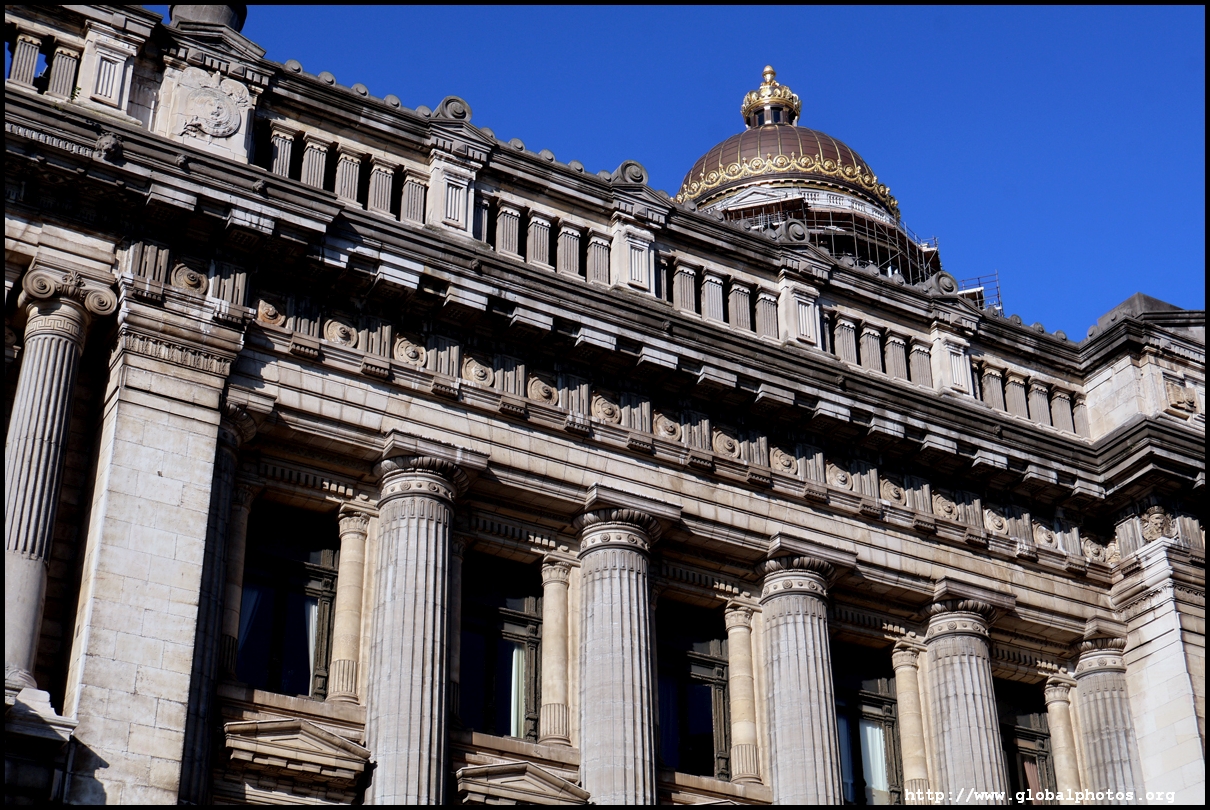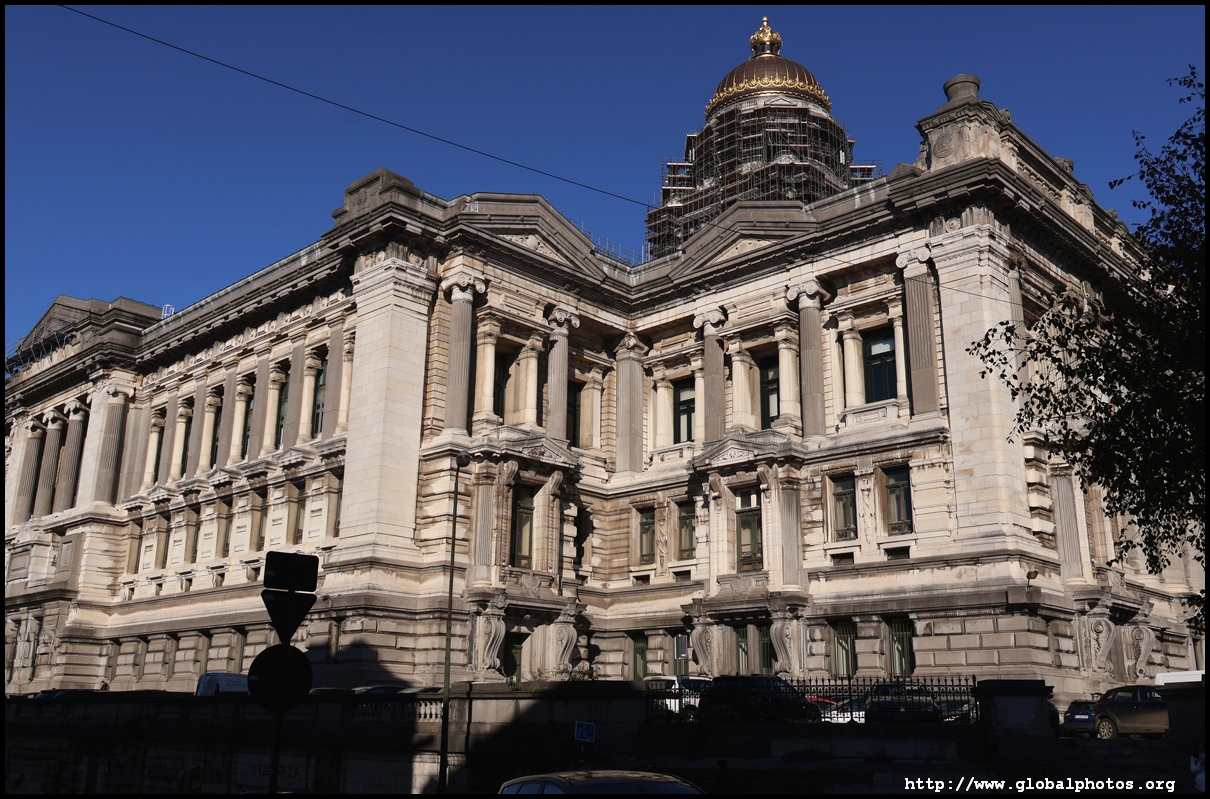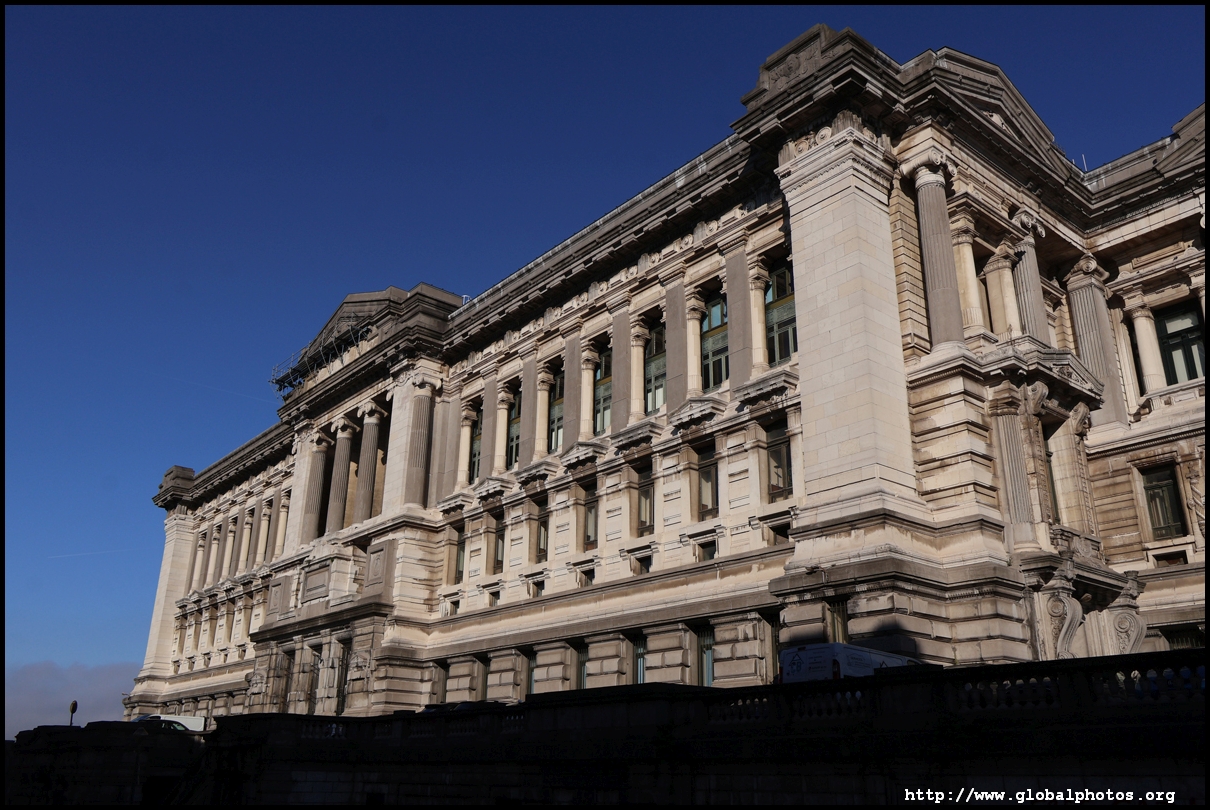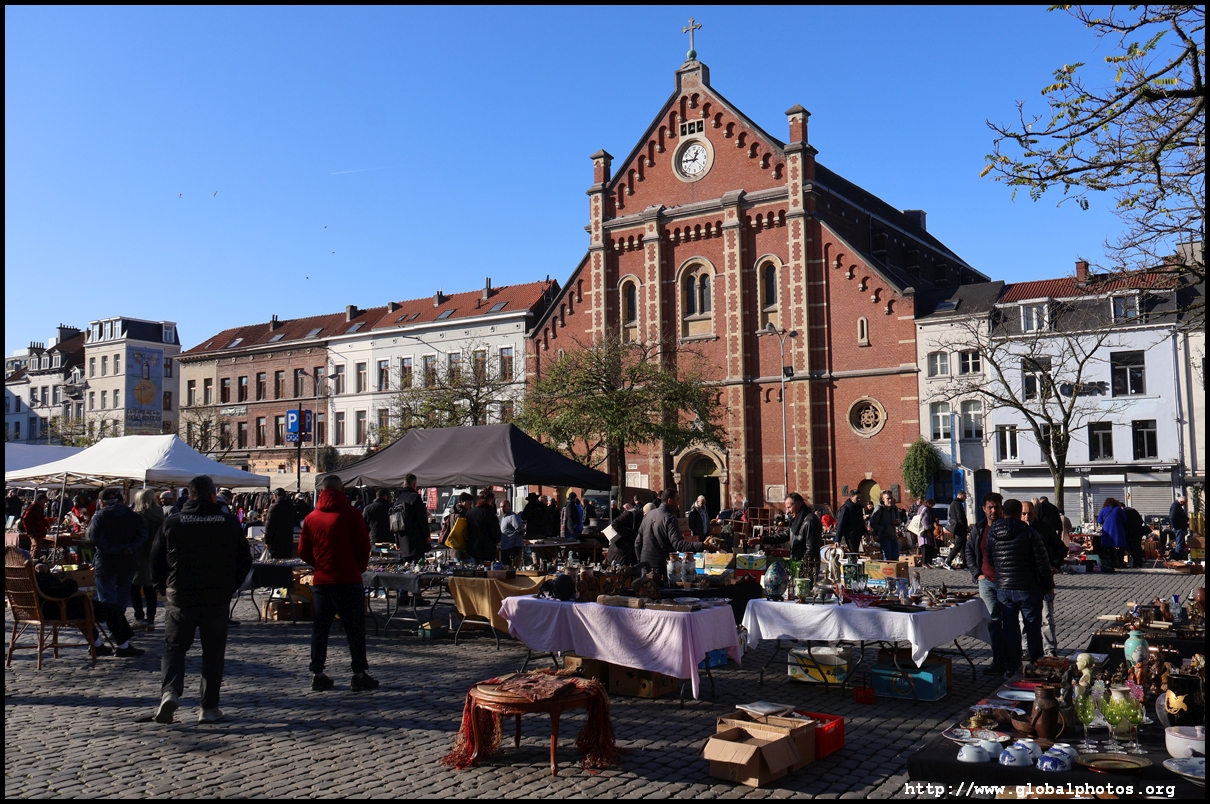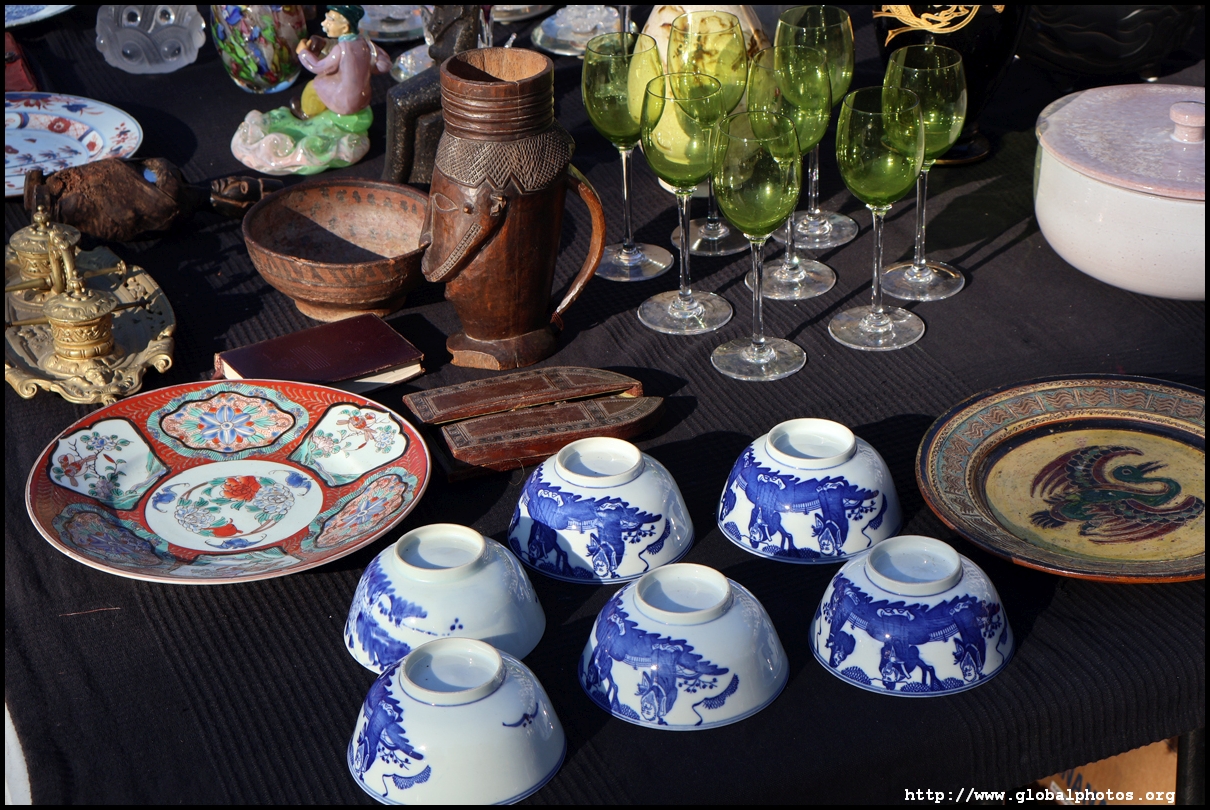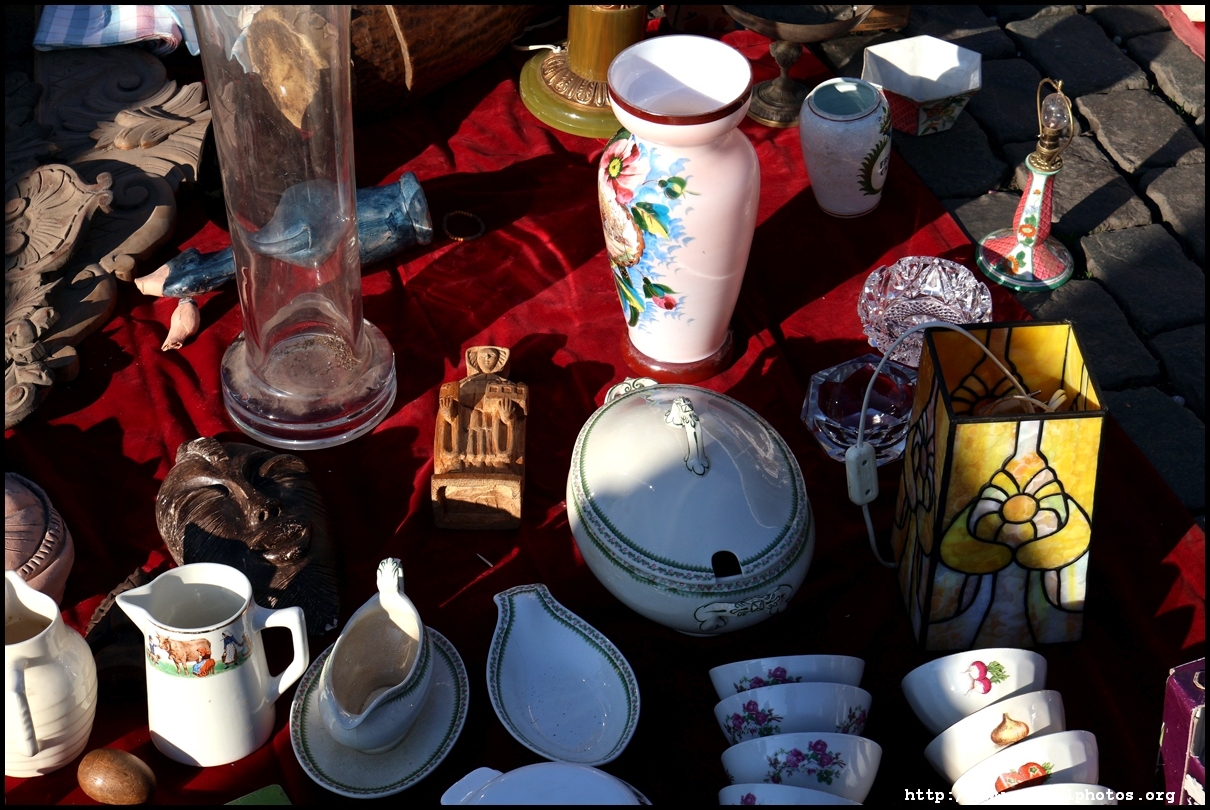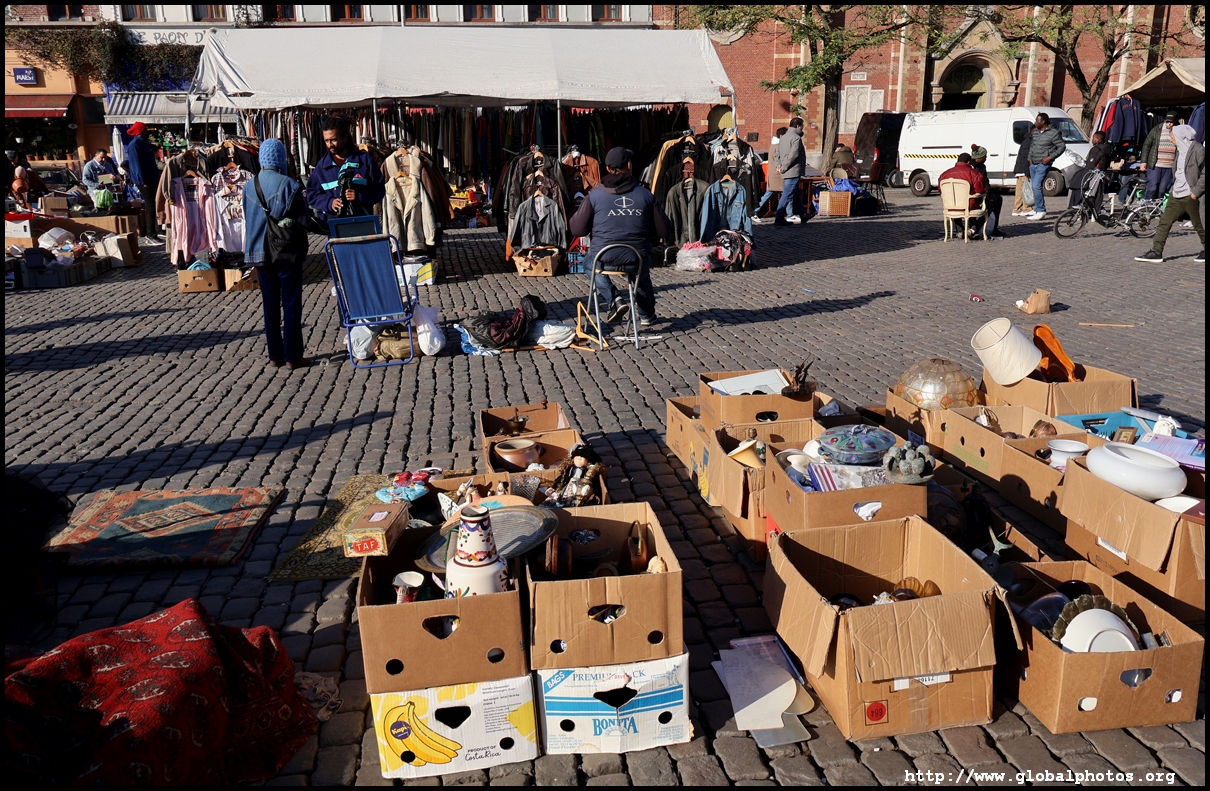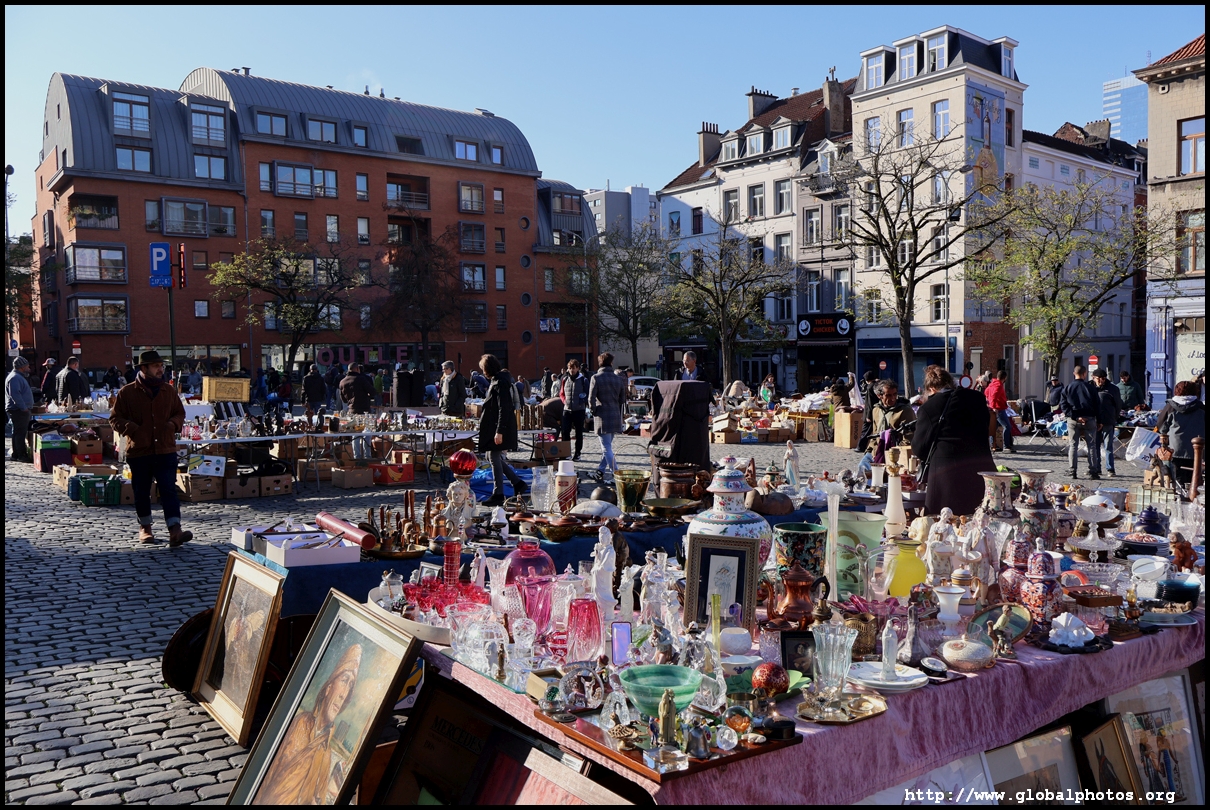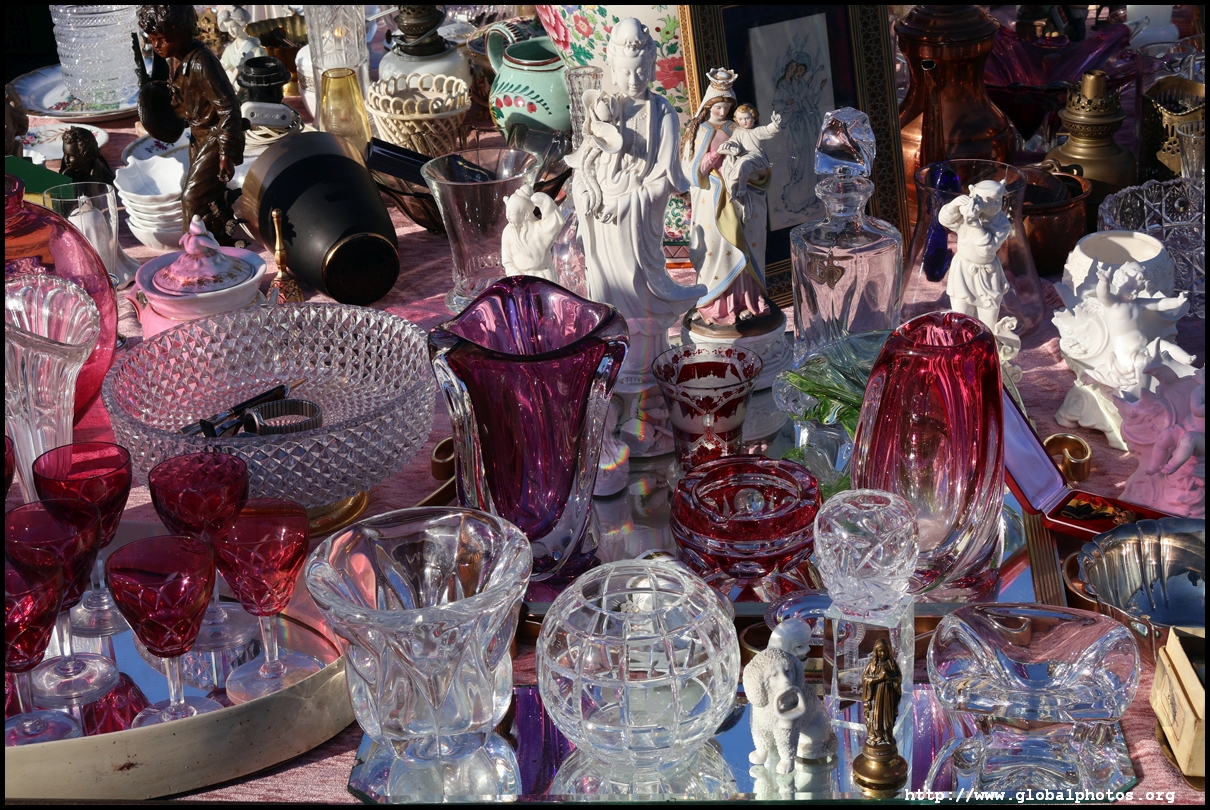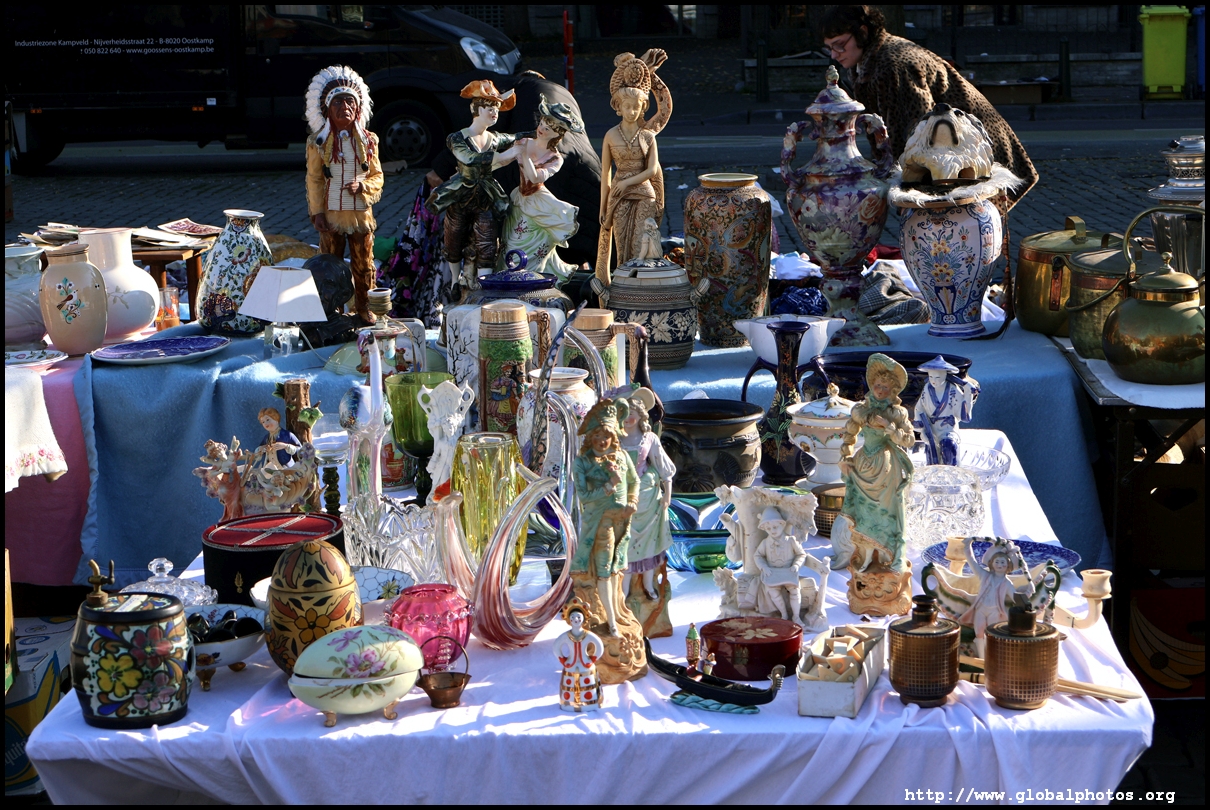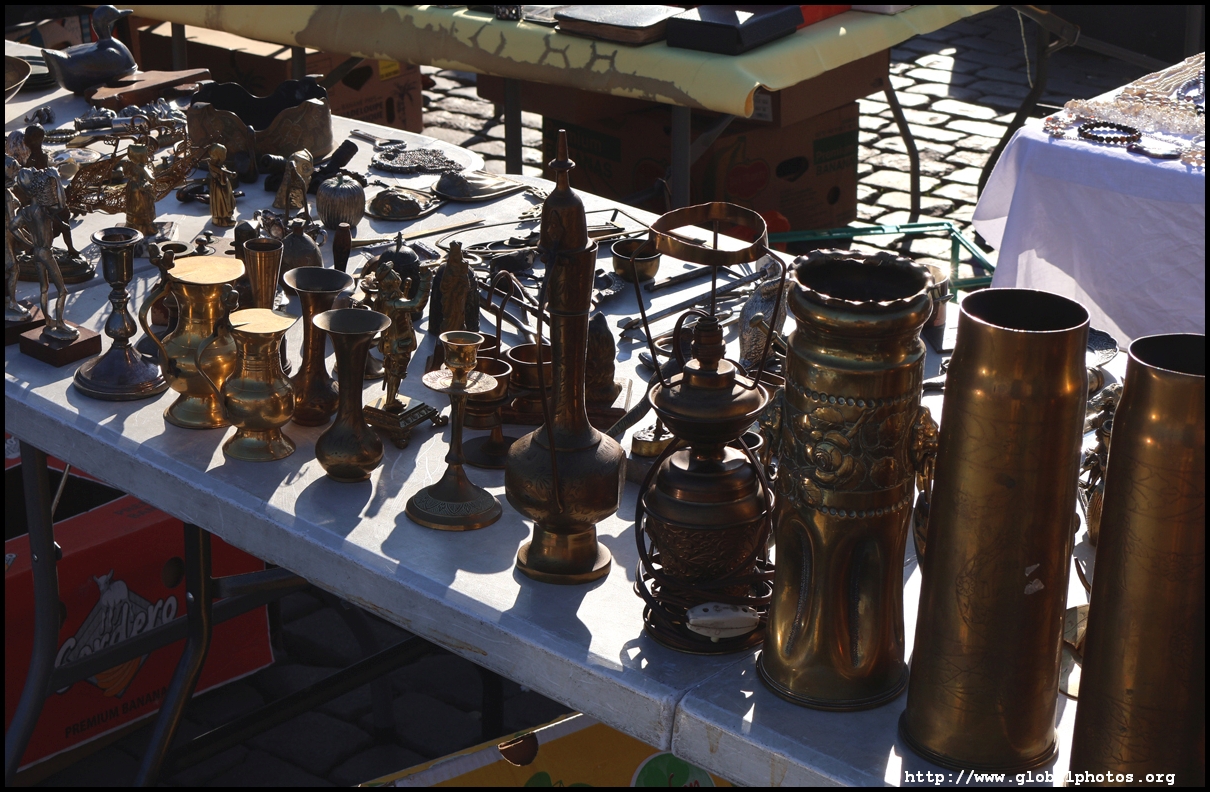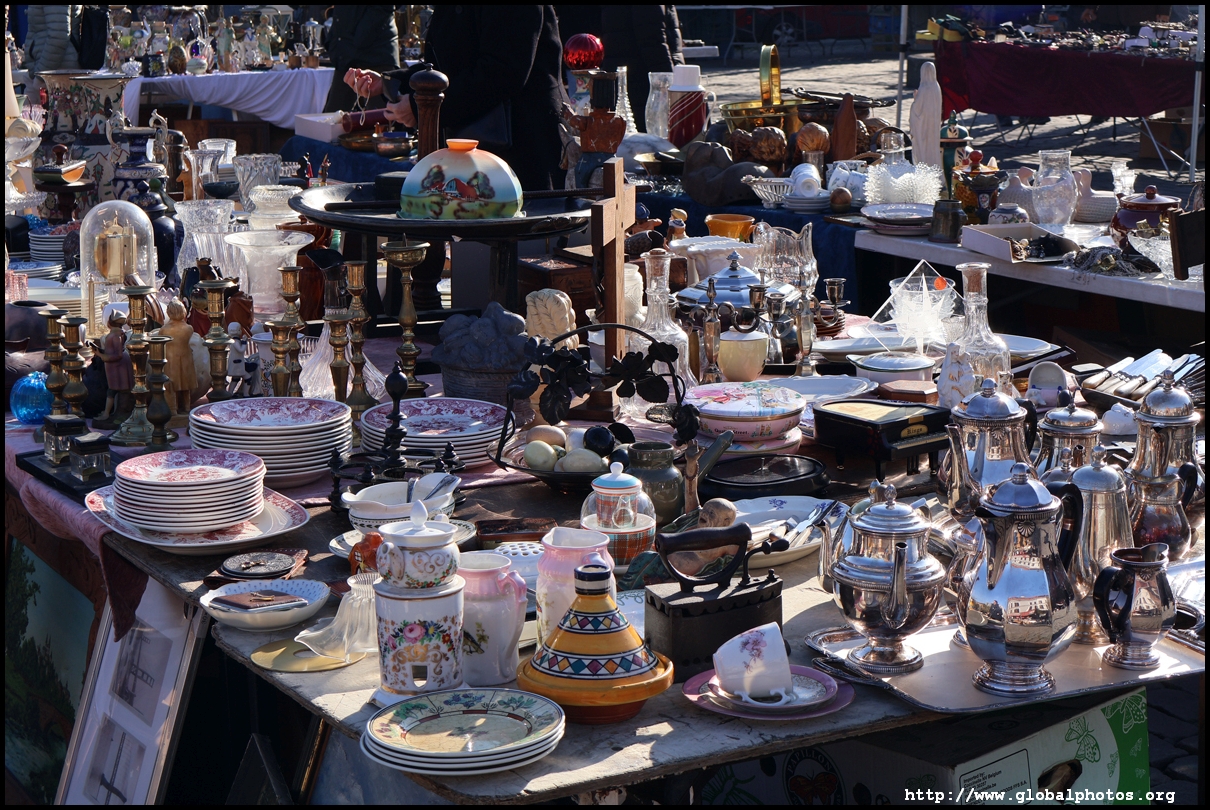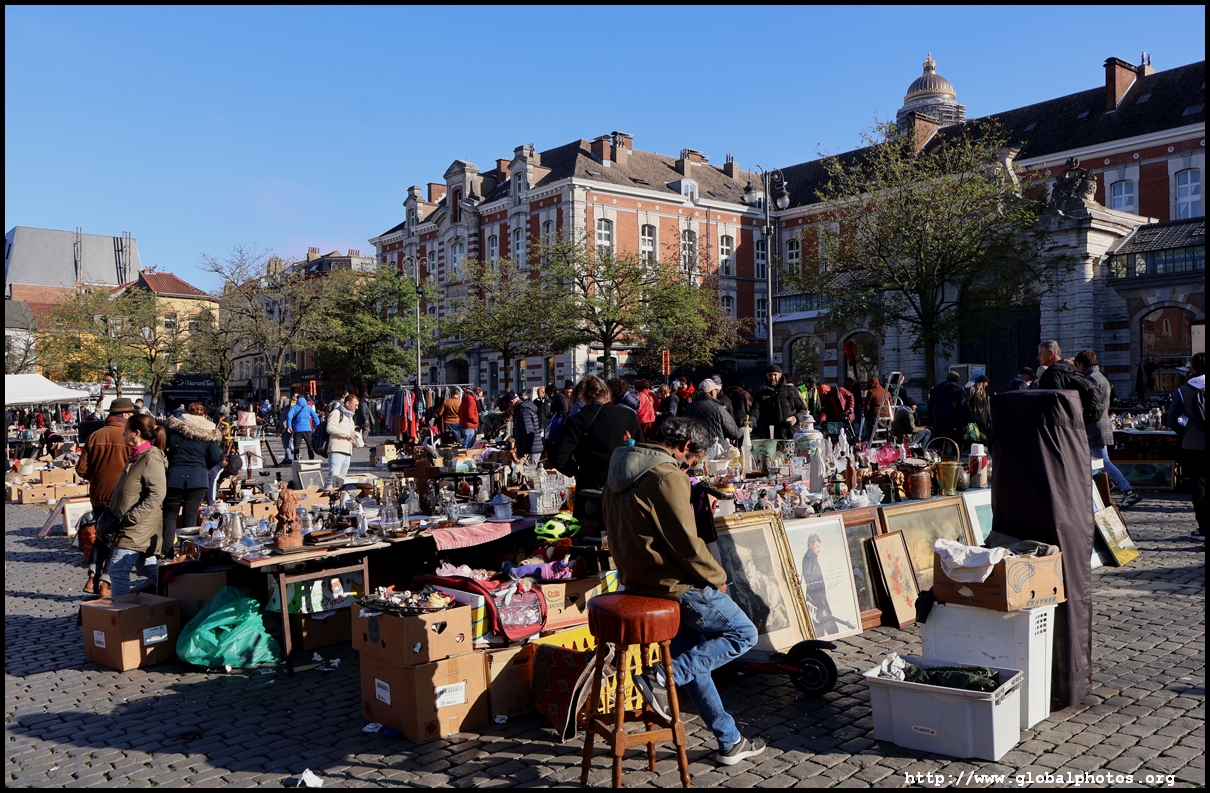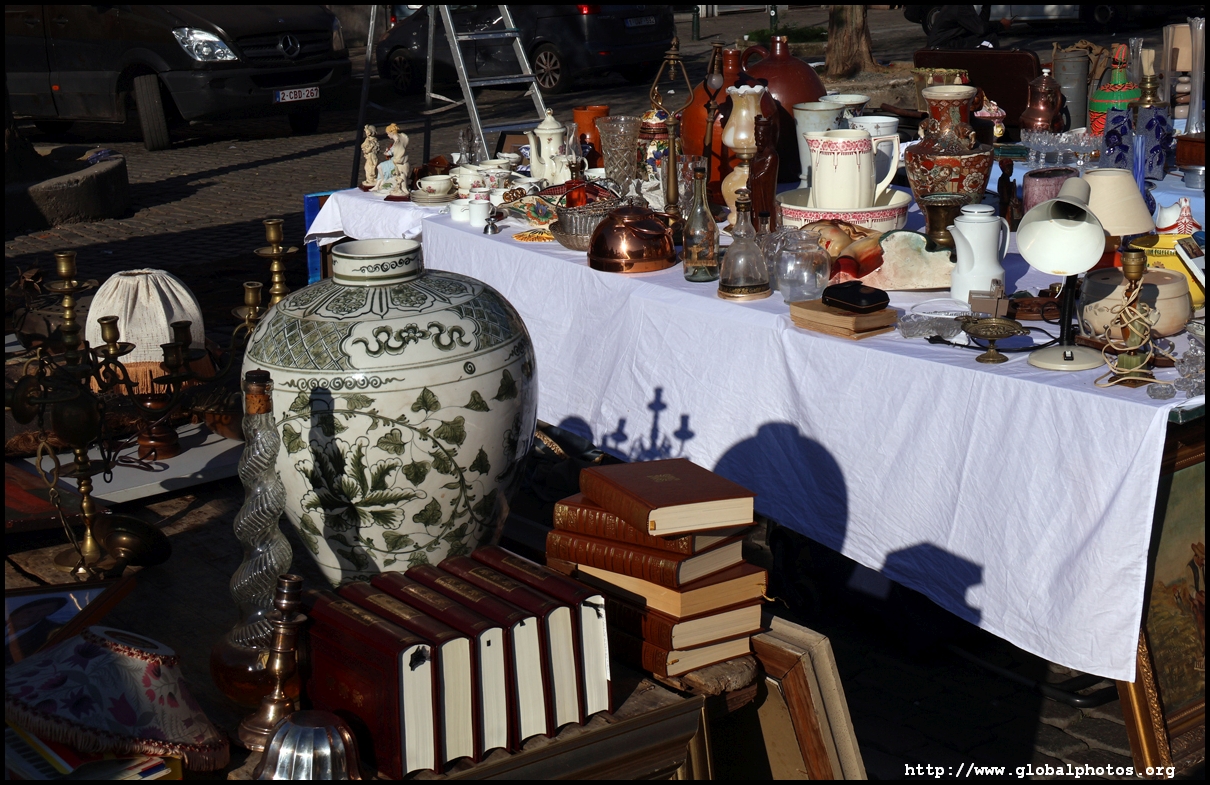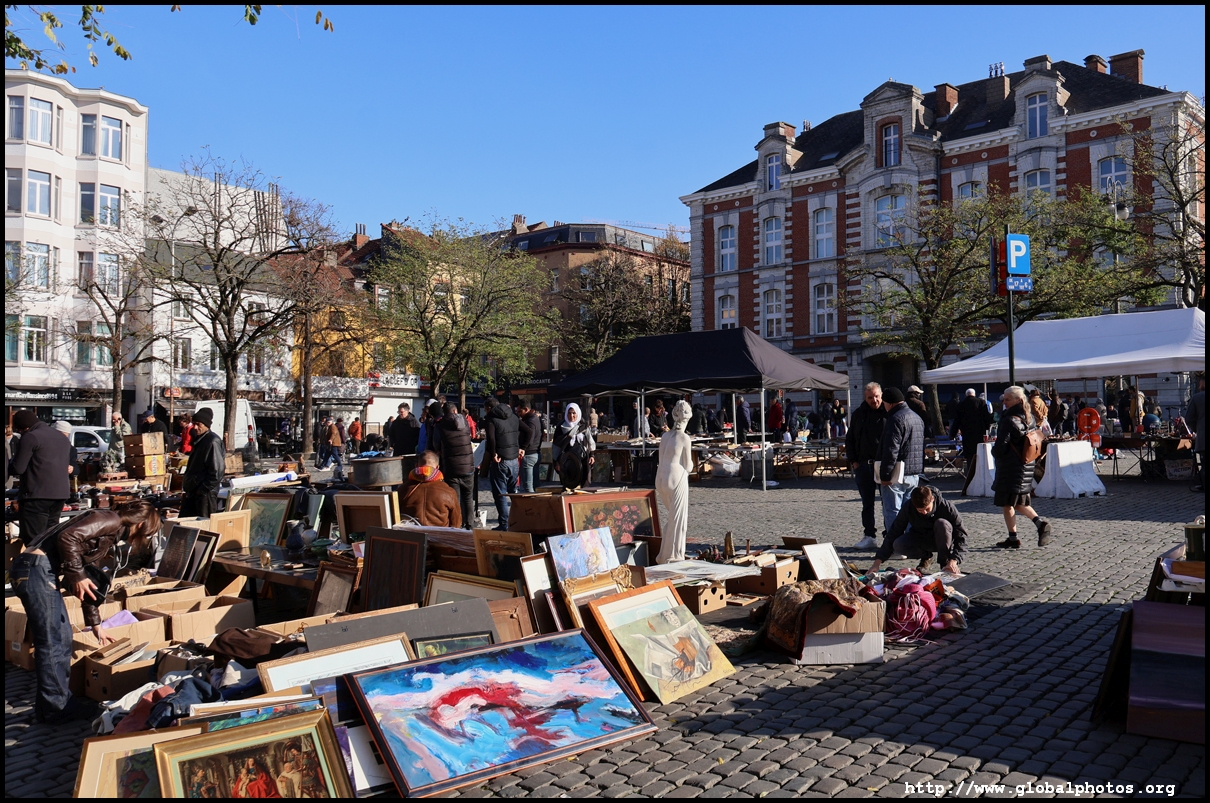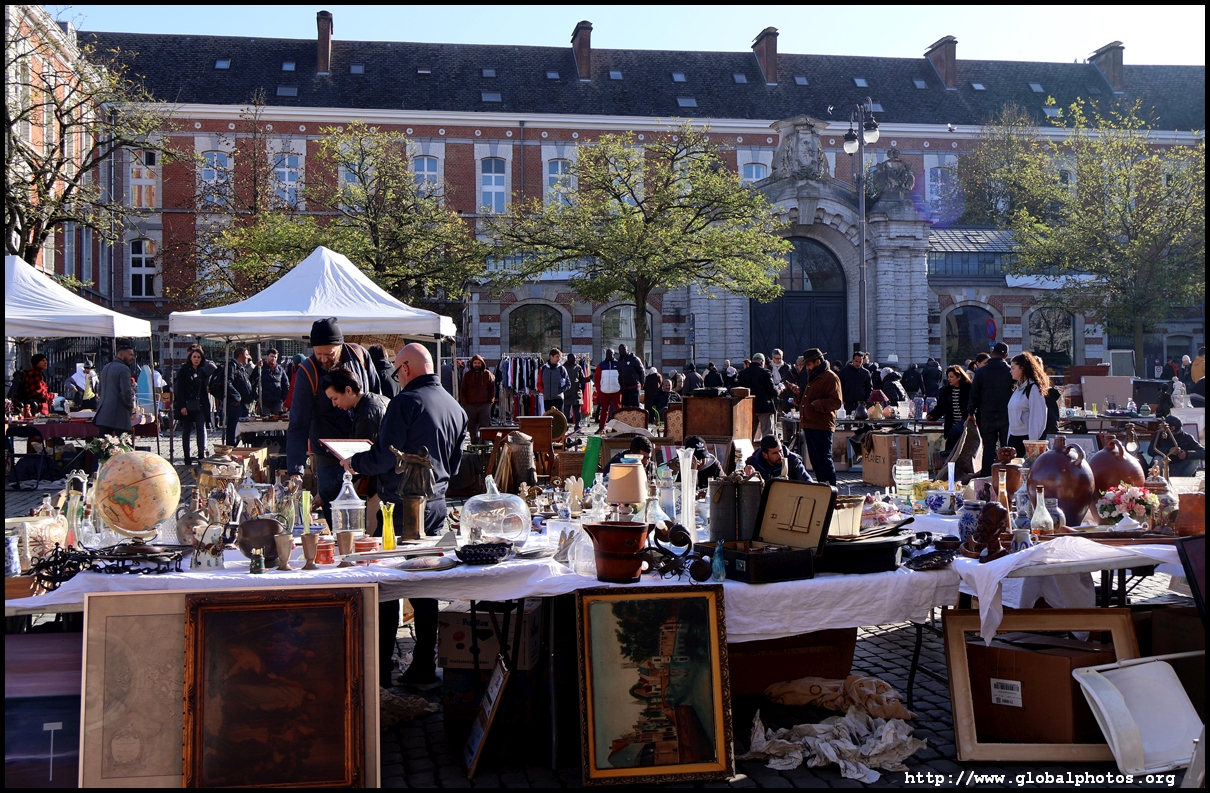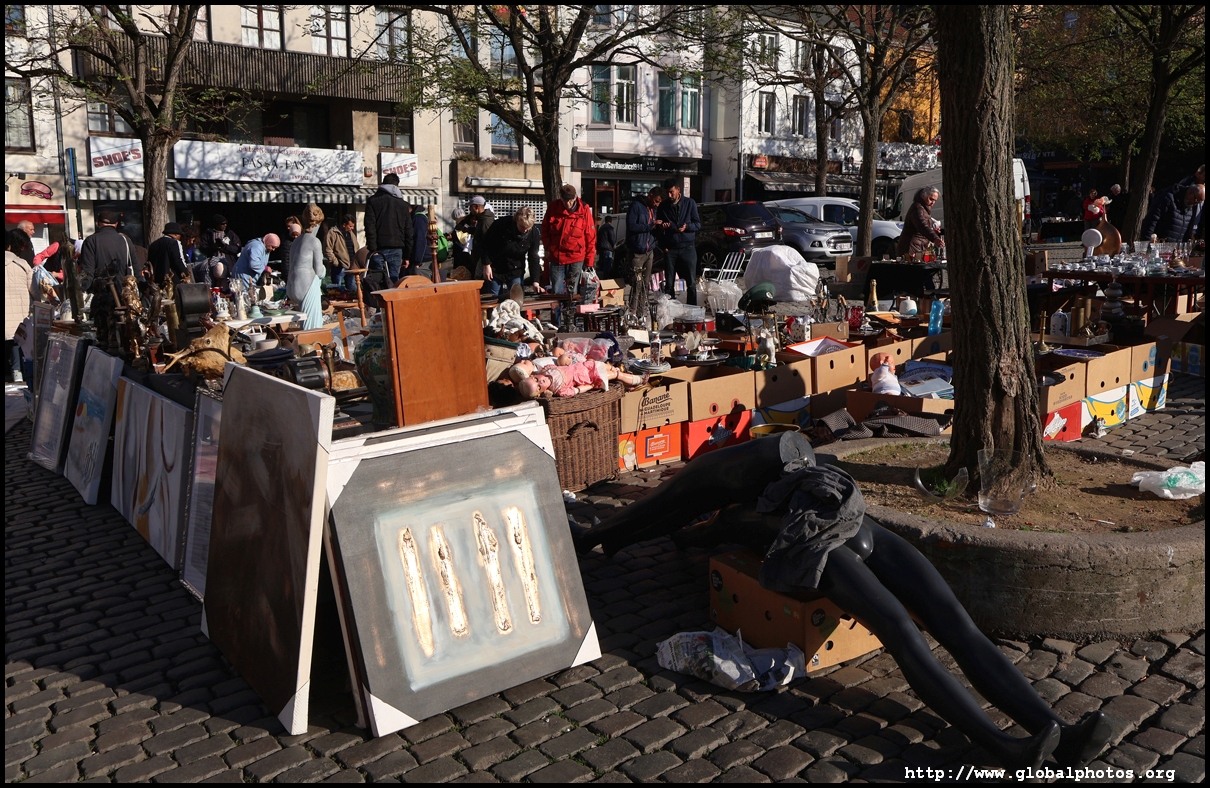Brussels Photo Gallery - Quartier Marolles & Palais de Justice

The tourist crowds thin out drastically in the streets south of Grand Place pretty quickly. The Quartier Marolles consists of 2 main streets and used to be home to artisans and the working class. As industry closed and moved to the suburbs in the late 19th century, the area became a slum until things started to improve in the late 1980s. Rue Haute and Rue Blaes pictured here is now a safe place for a walk with a lot of design-related shops.
A free elevator just off Rue Haute in a public square takes you up to the Upper Town right in front of the Palais de Justice, where there is a short promenade with nice views.
A ferris wheel greets you as you exit the elevator. It is a fairly recent installation at the Place Poelaert, and rightfully placed given the area's elevated vantage point.
The huge Palais de Justice stands on former execution grounds in the Middle Ages. Its history goes back to 1860 when there was an international competition for a new courthouse. None of the entries got selected but the city's architect, Joseph Poelaert, was chosen for the project instead. Construction spanned 17 years and the new building opened in 1883. Its huge size with over 250 rooms and a 100m high dome drew plenty of criticism at the time.
Heading back to the Lower Town, there is a daily flea market at Place du Jeu de Balle where you can get all sorts of things from clothing to old photographs, but no food. Dig yourself into the boxes spread around the floor and tables to find your treasure. During the 19th century, ball games were played here, hence the name. The market moved here in 1873.
| ||
To re-use these photos or notify of errors, please email me. Thank you.
Brussels Photo Gallery Main Page
